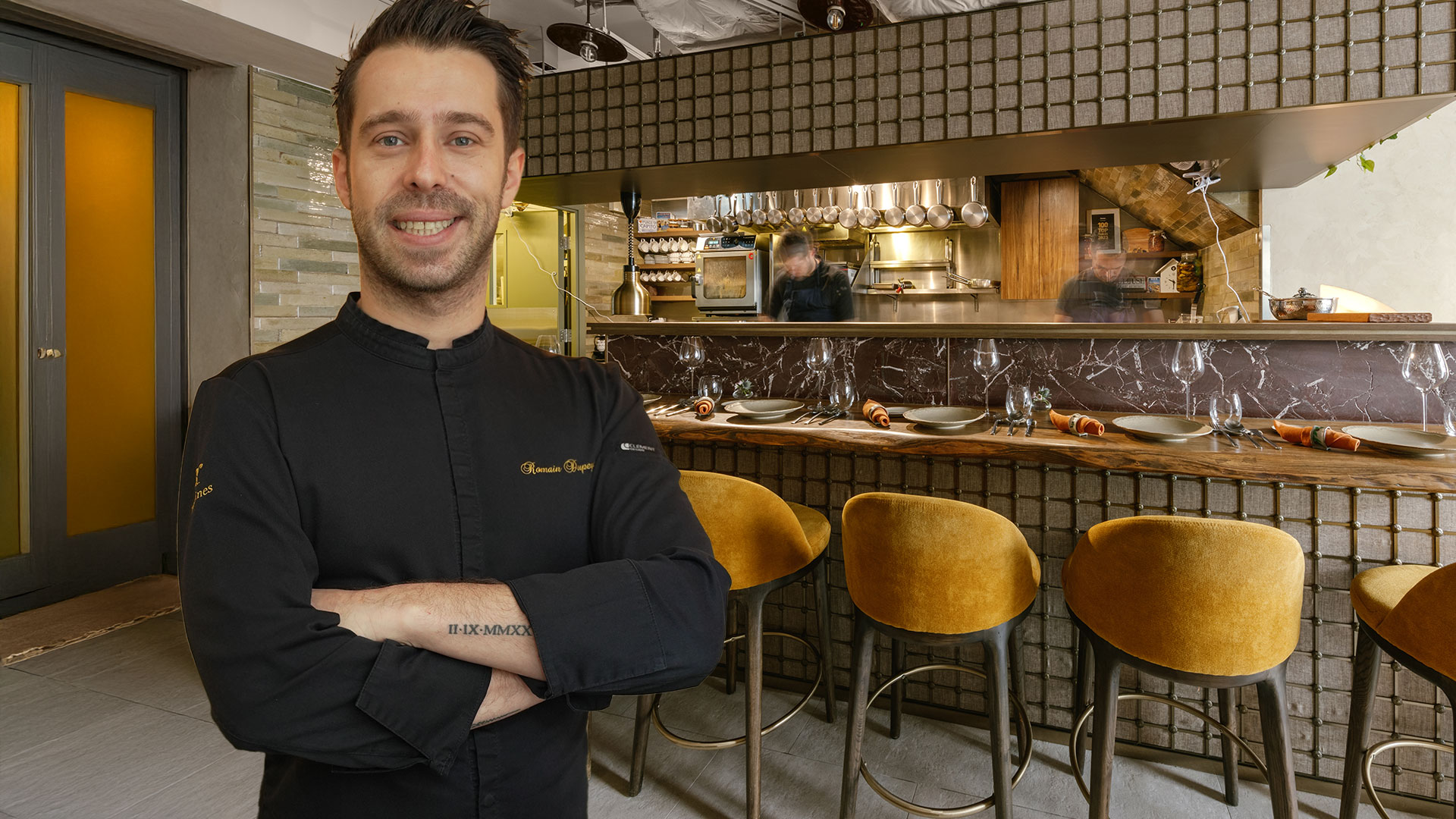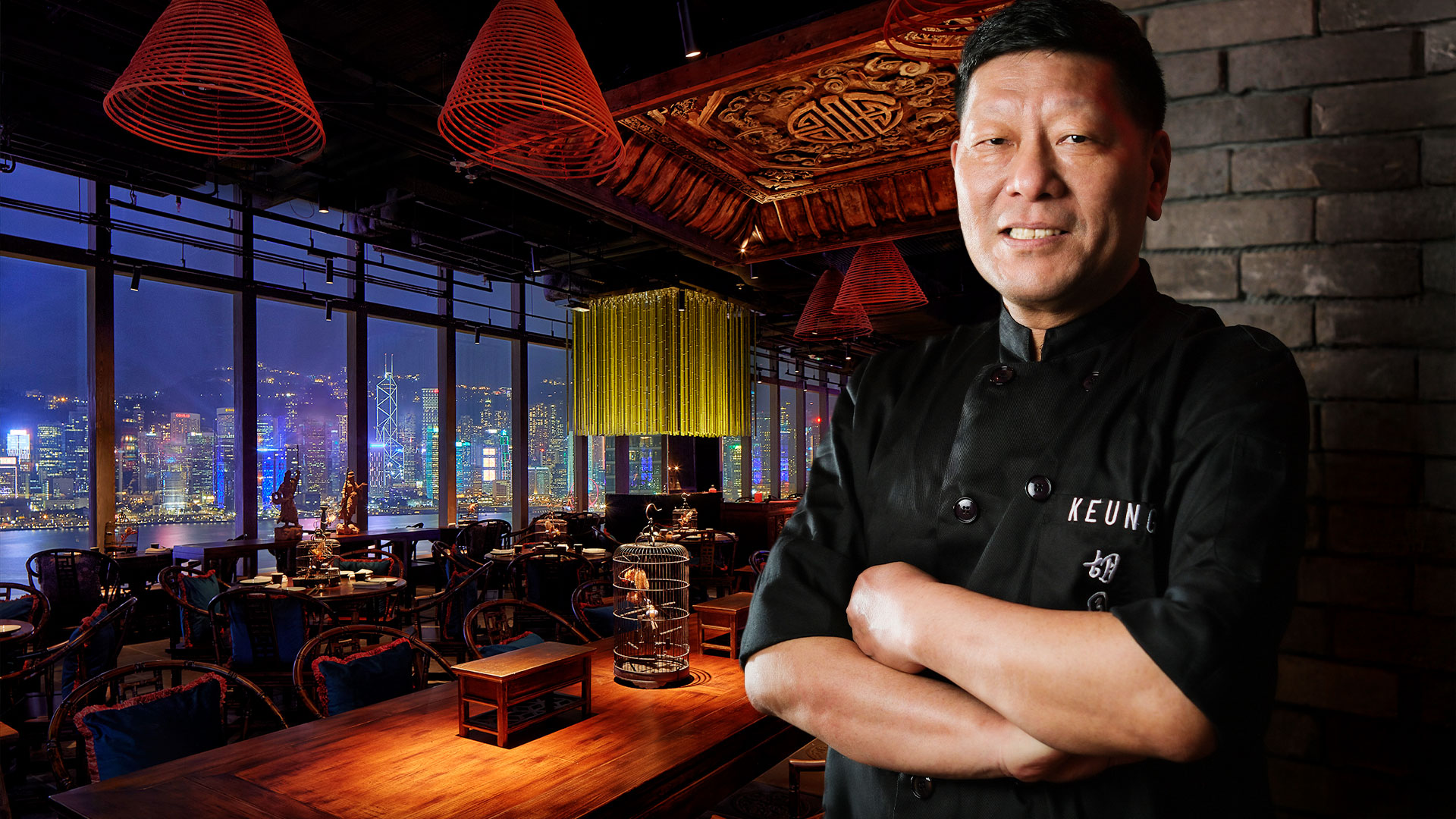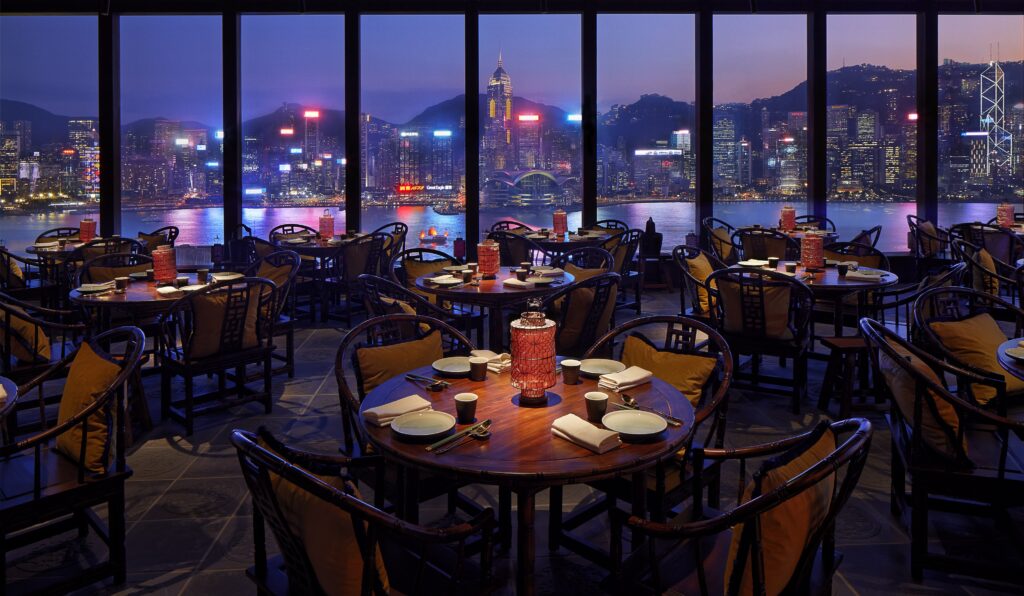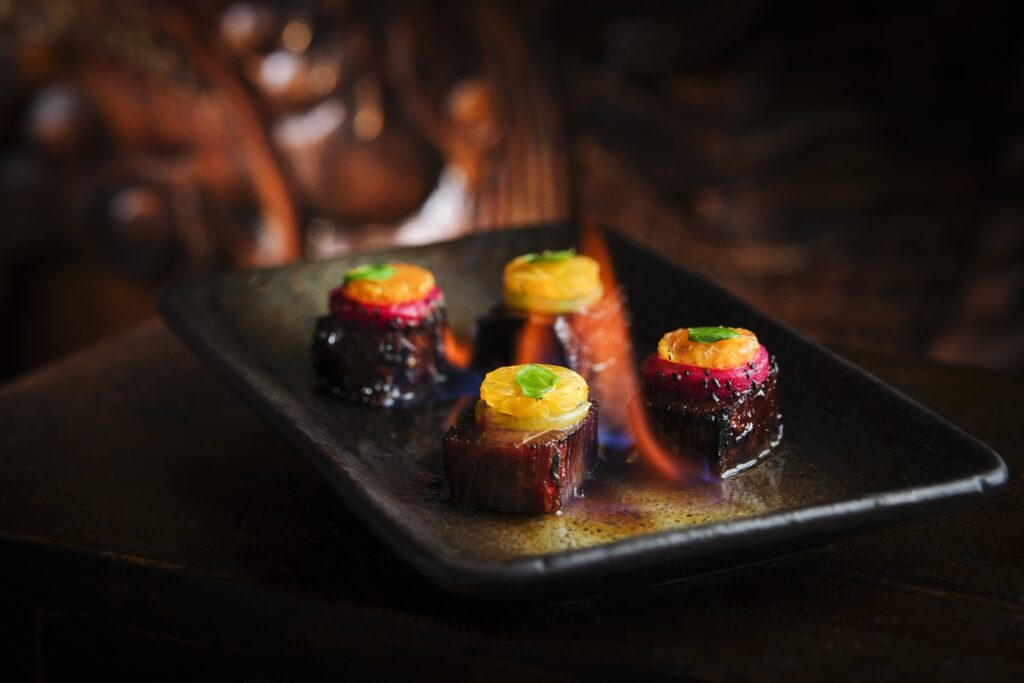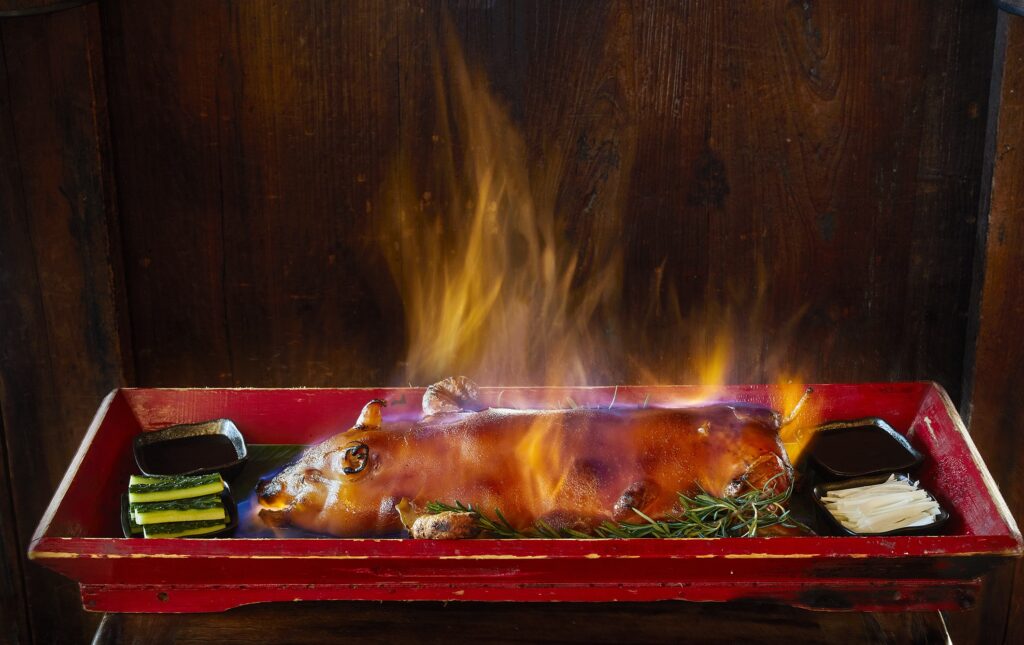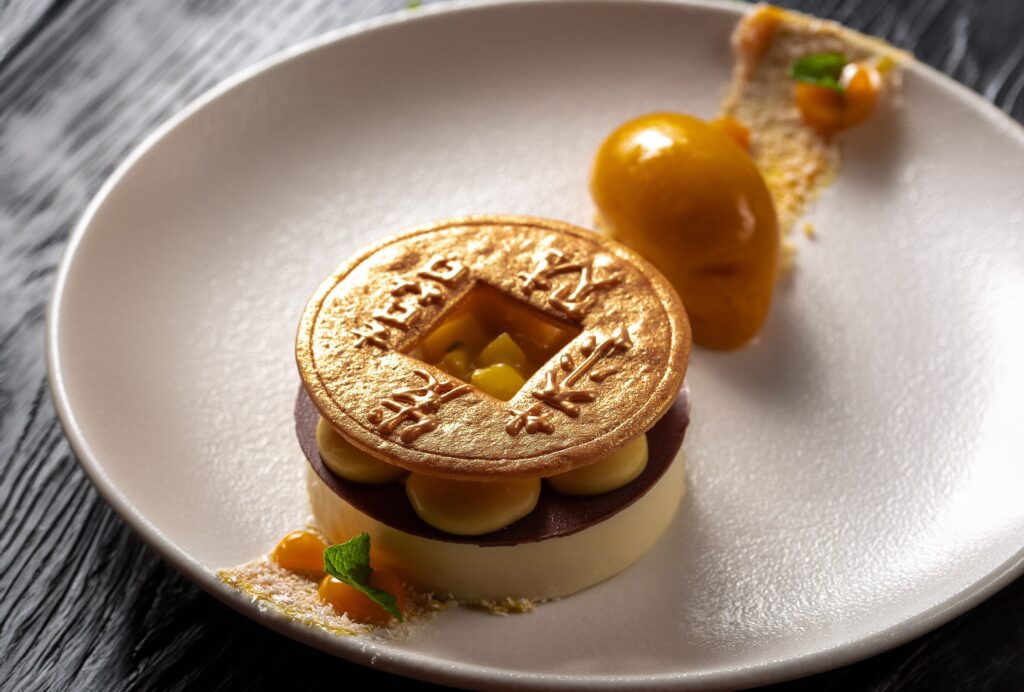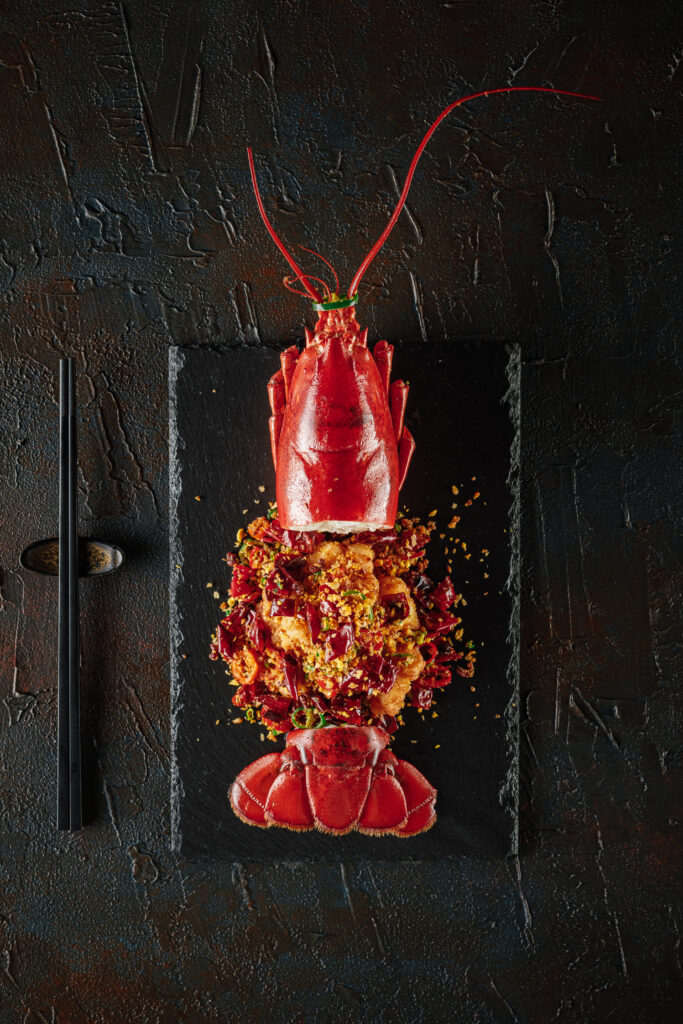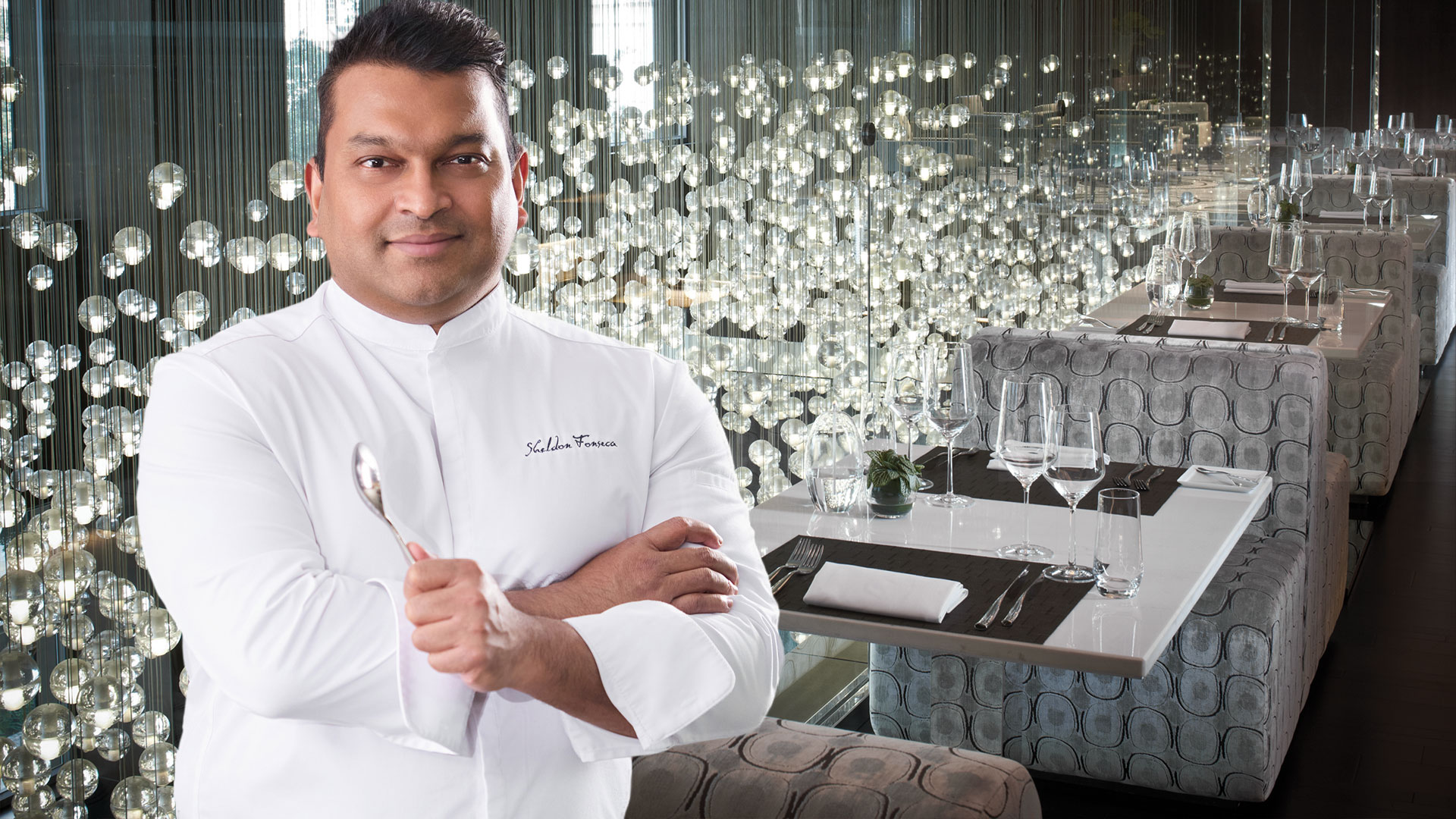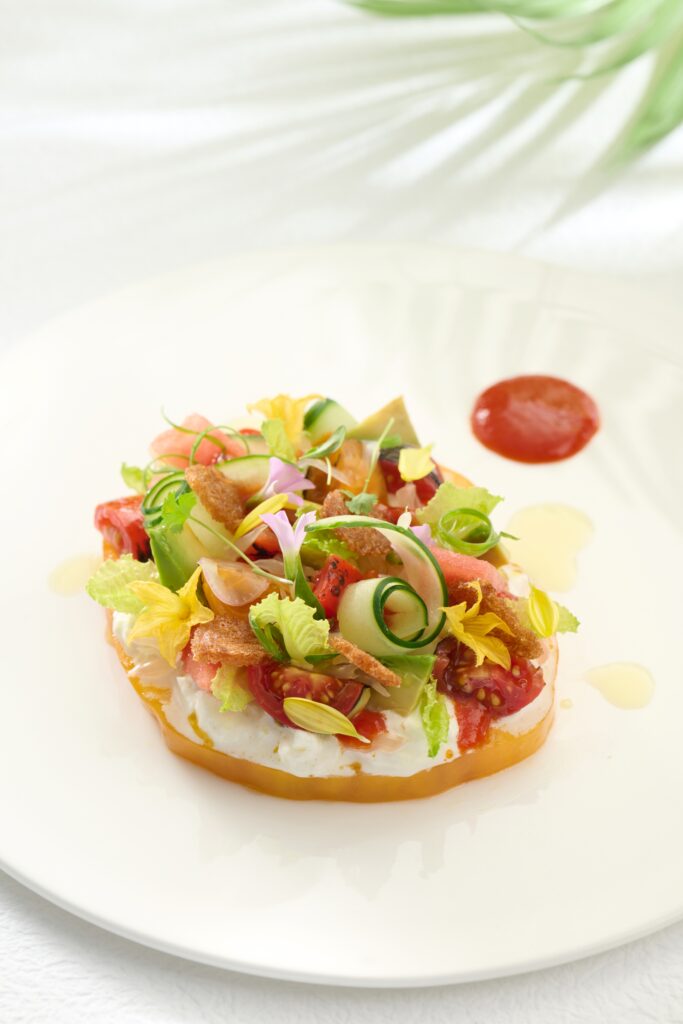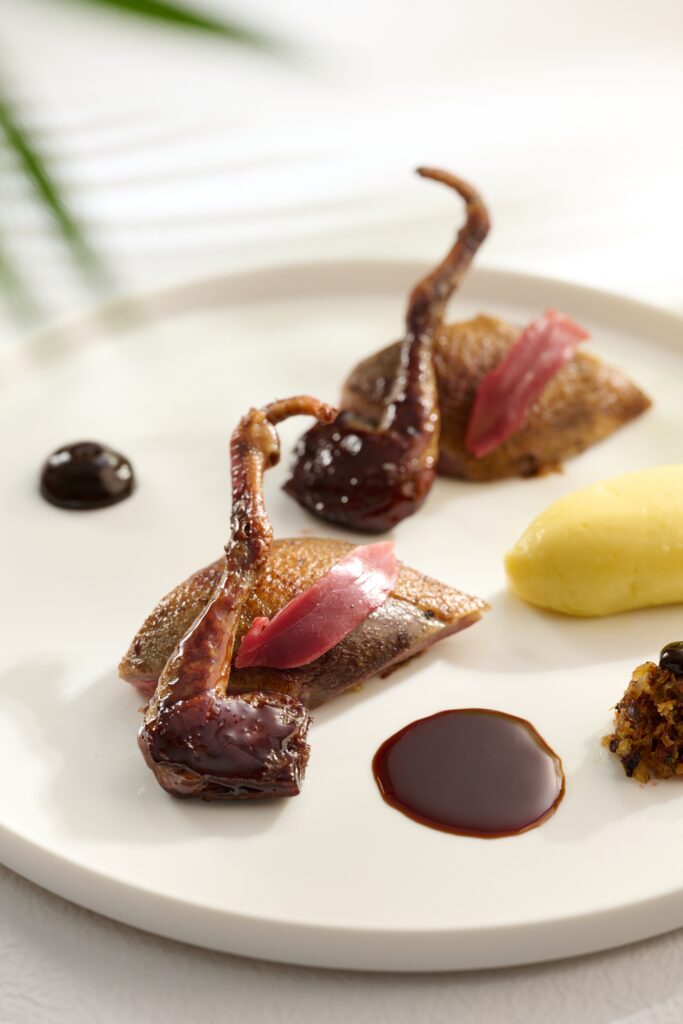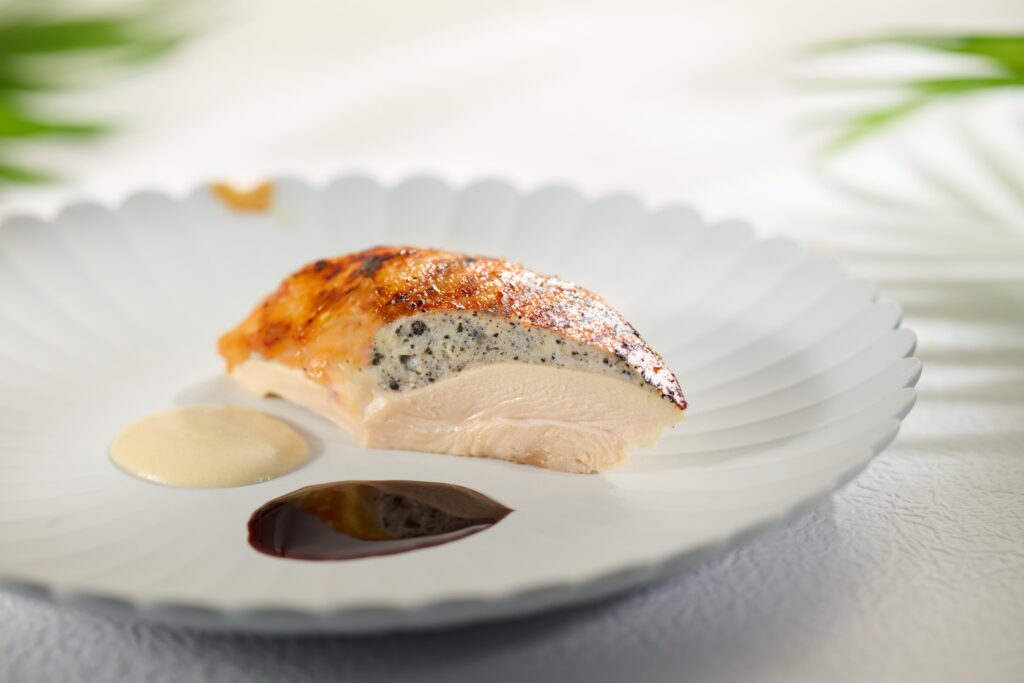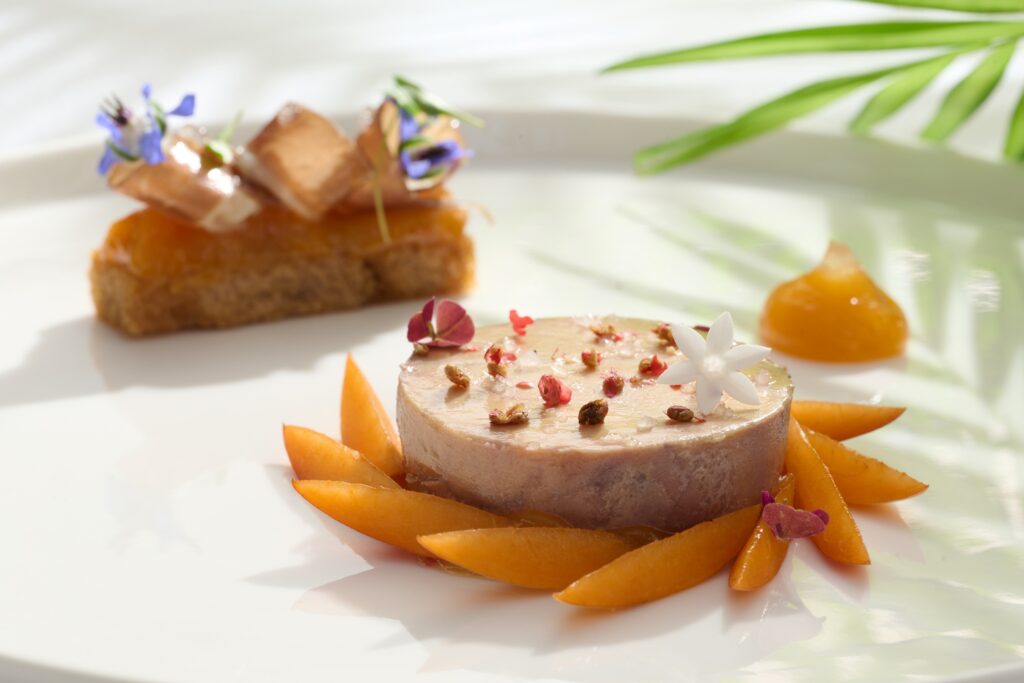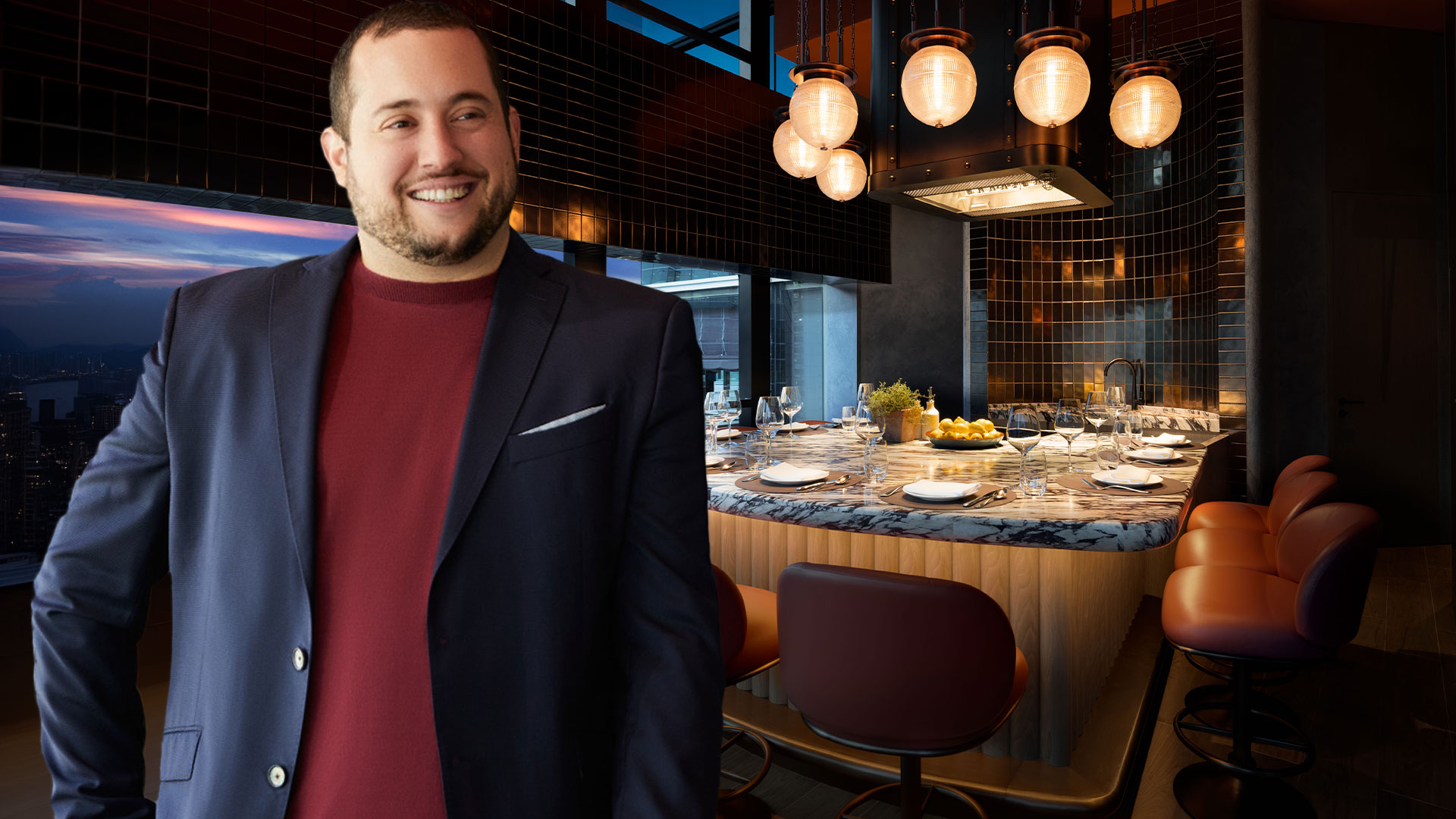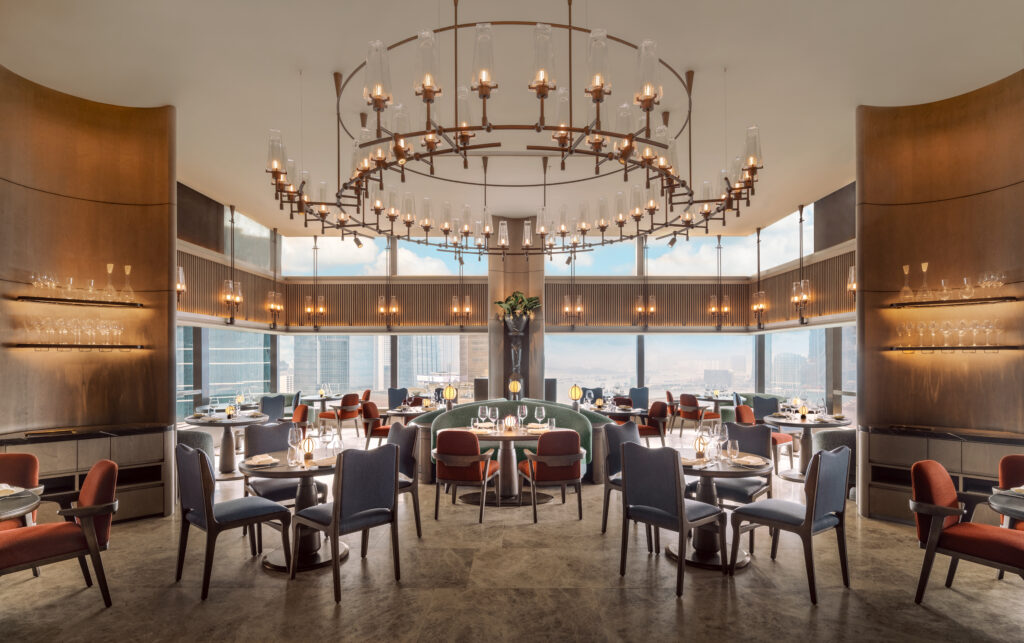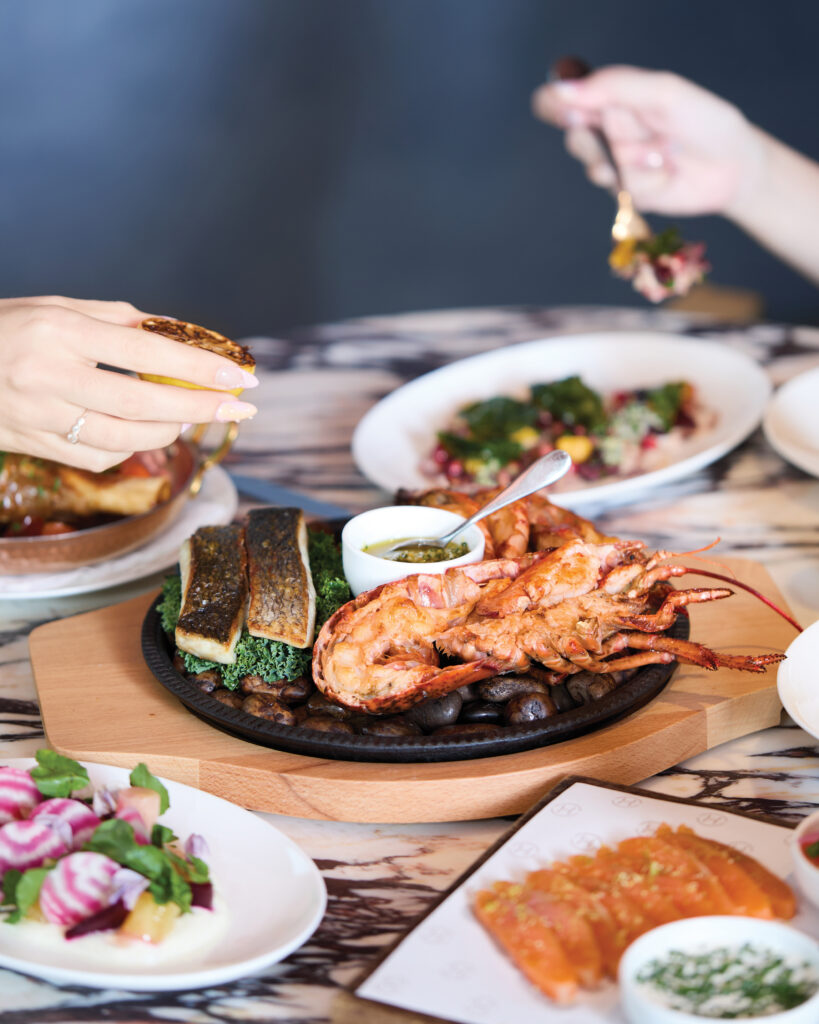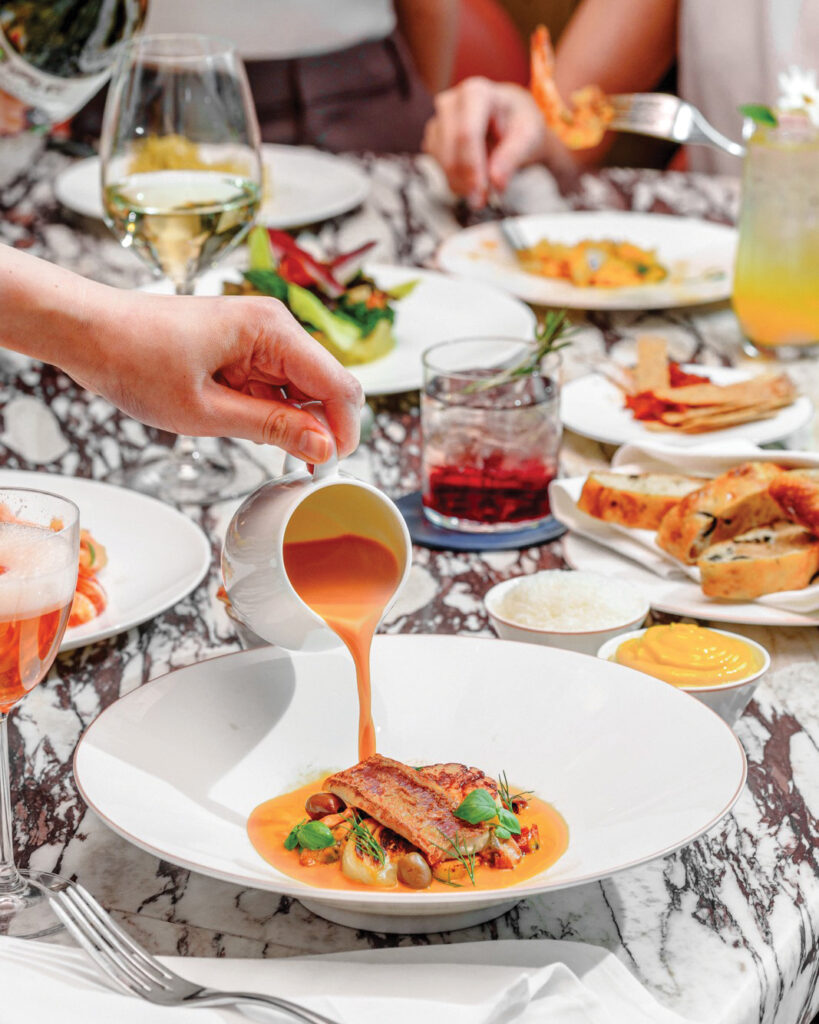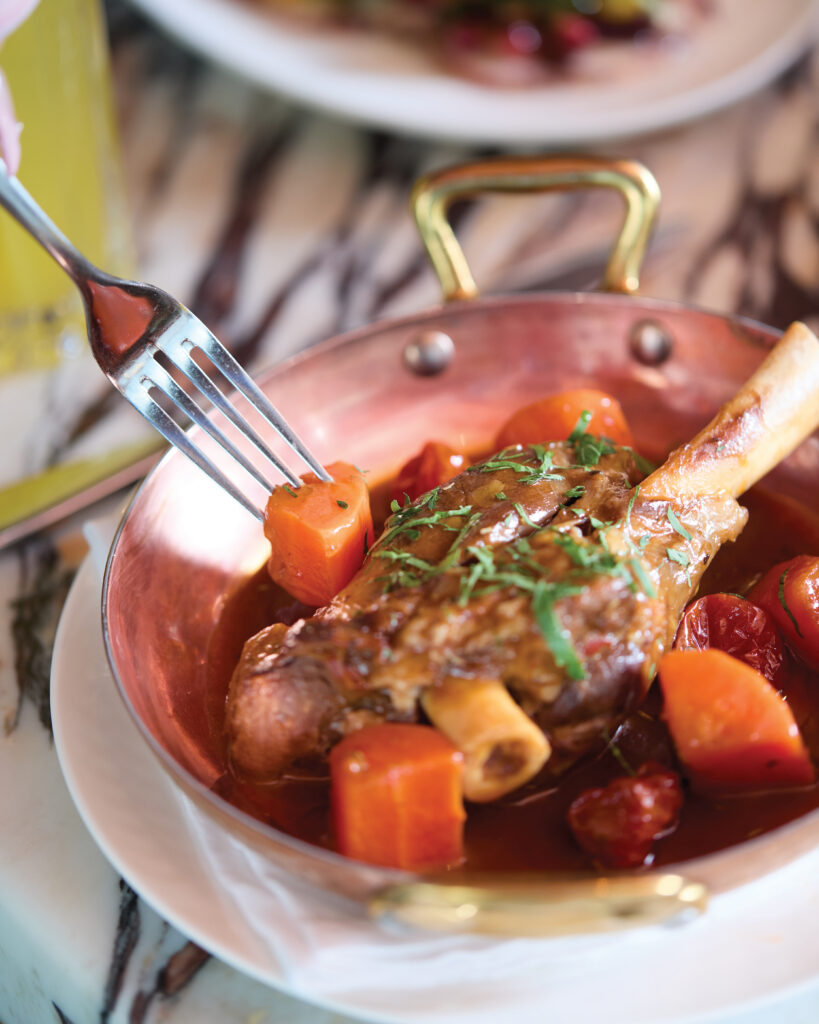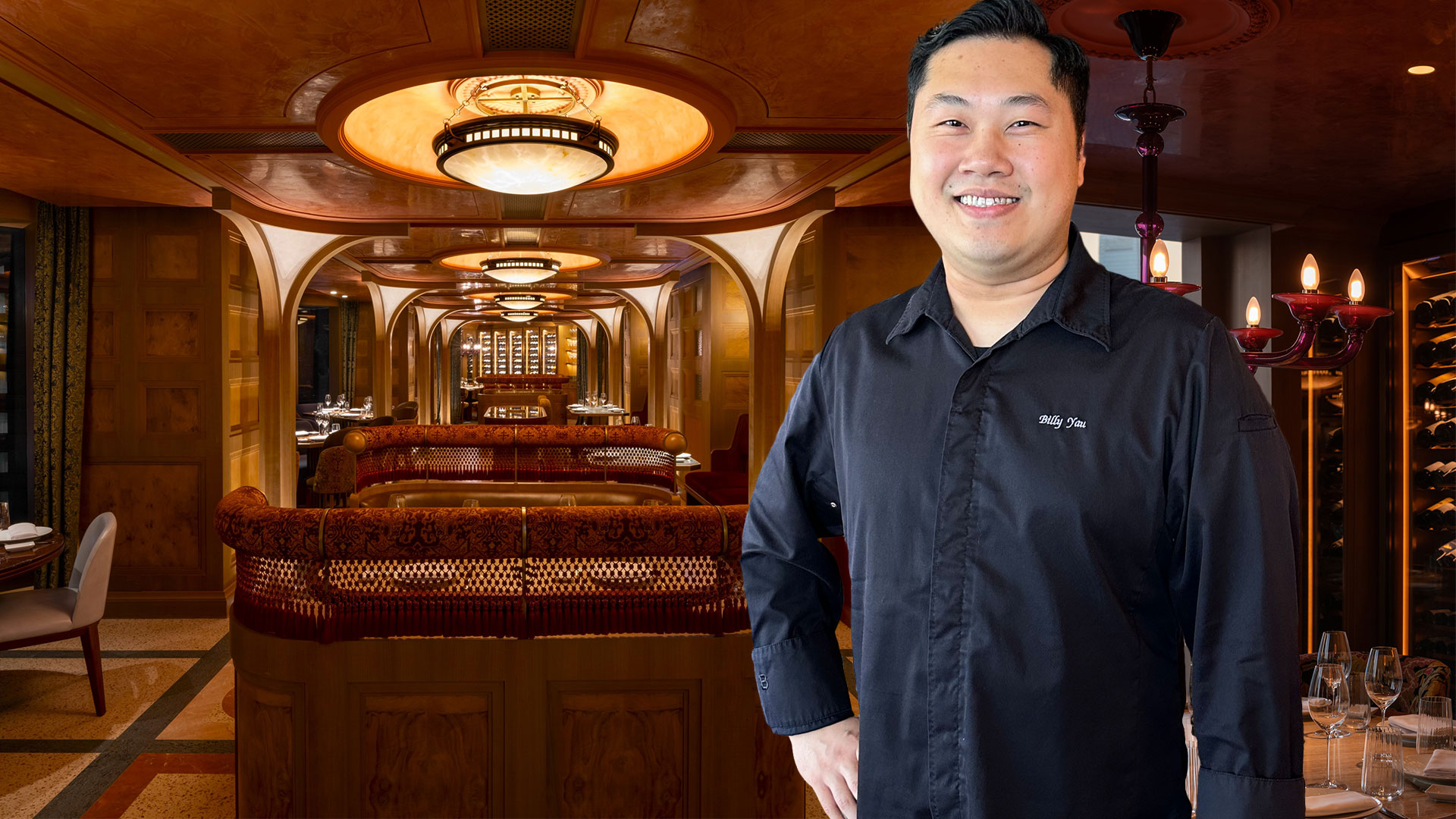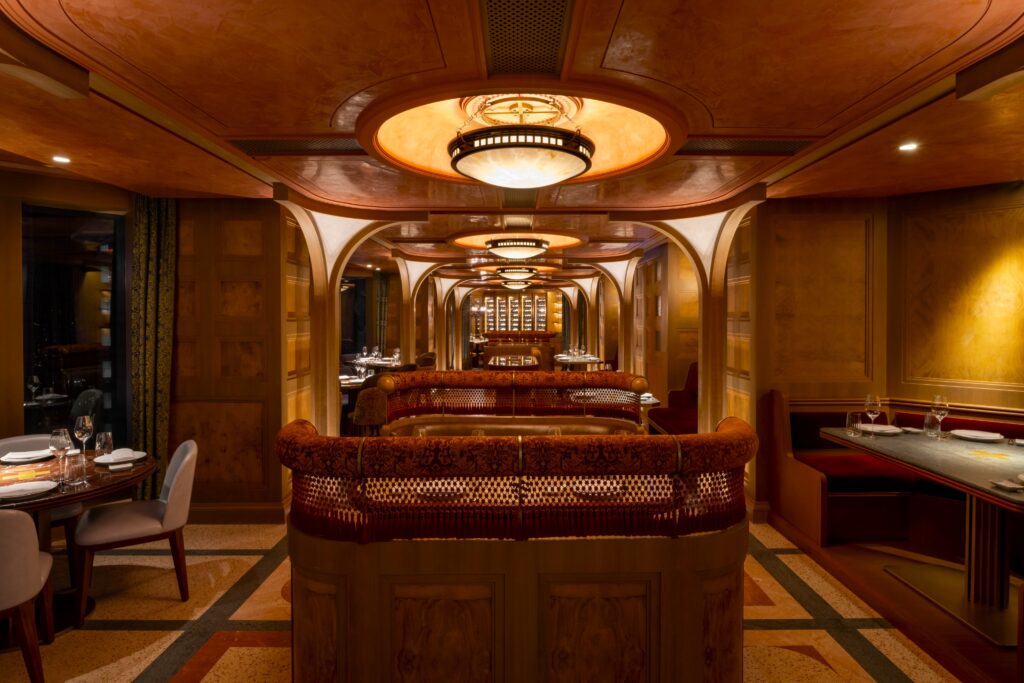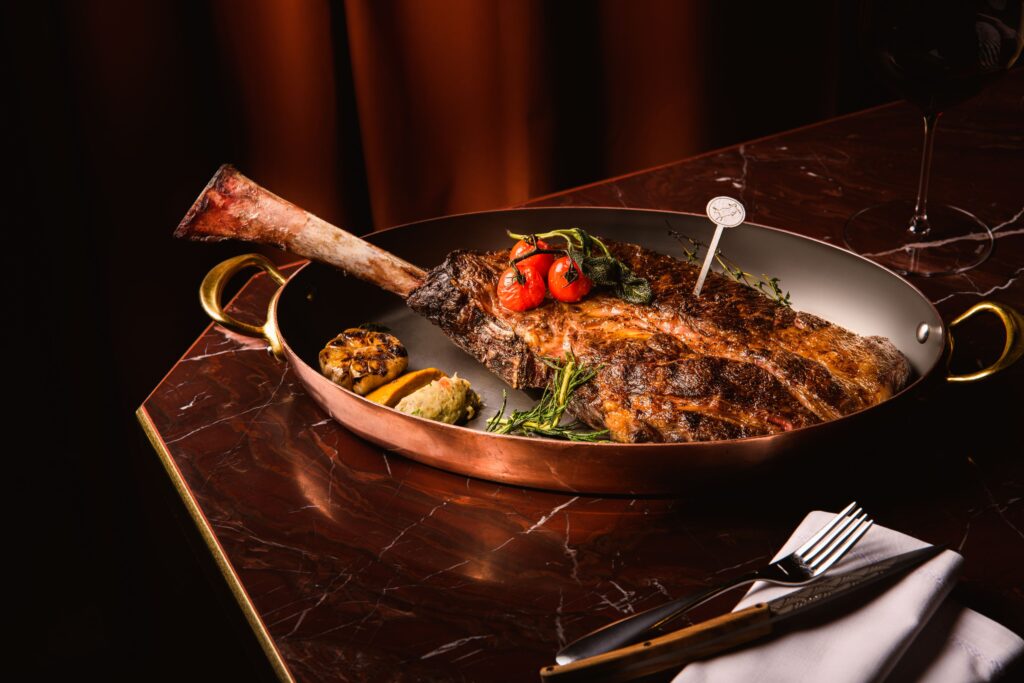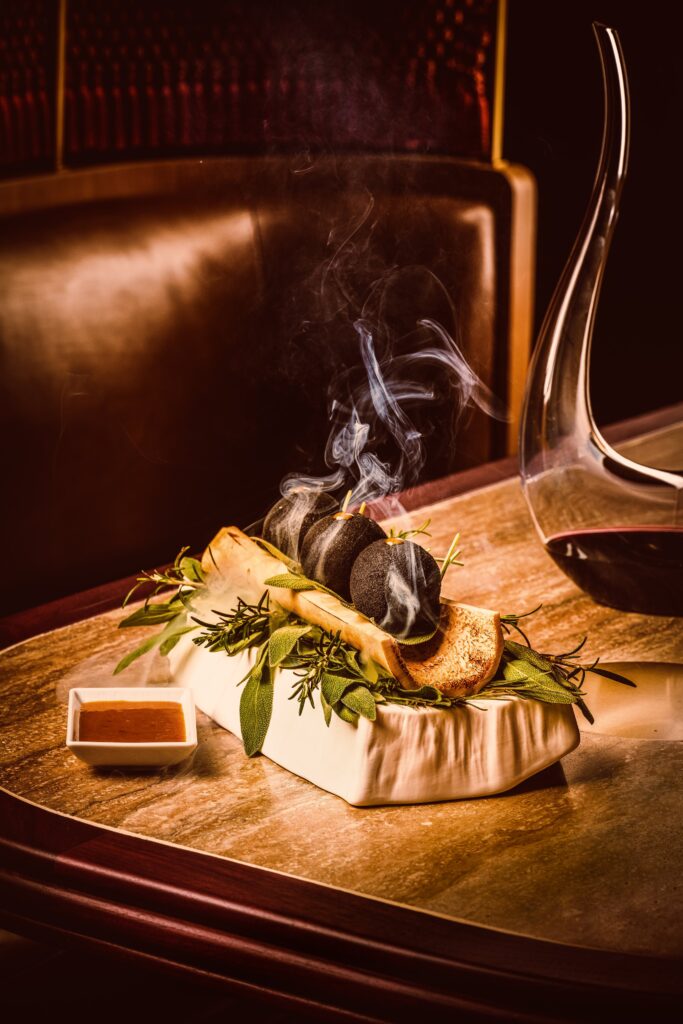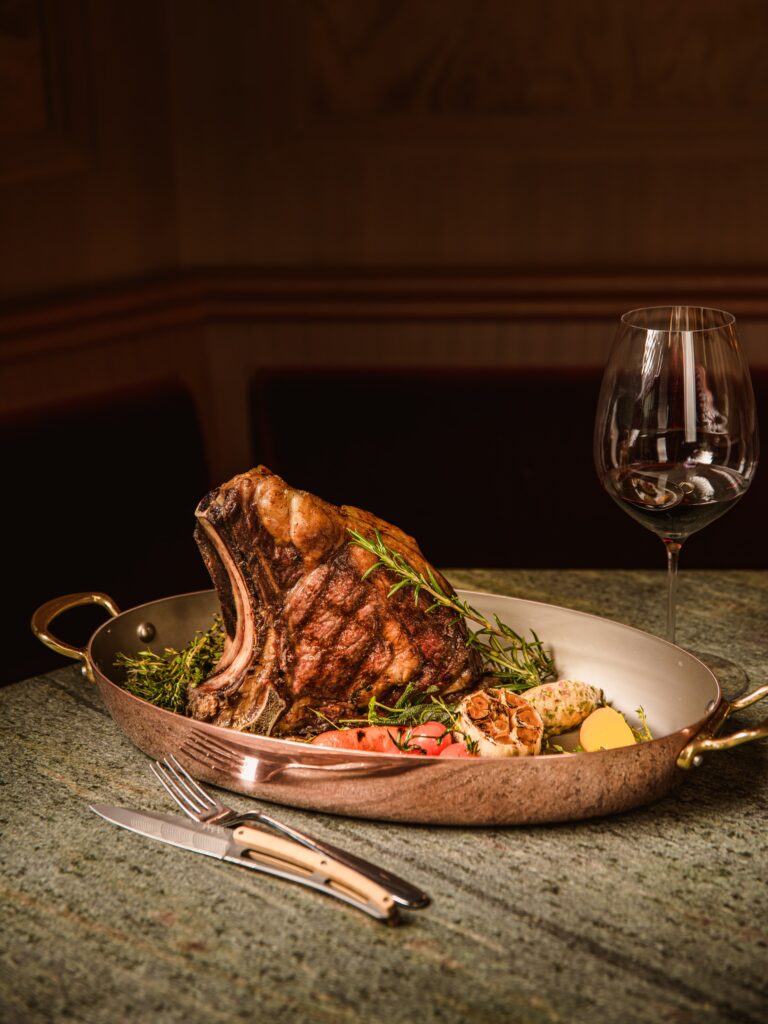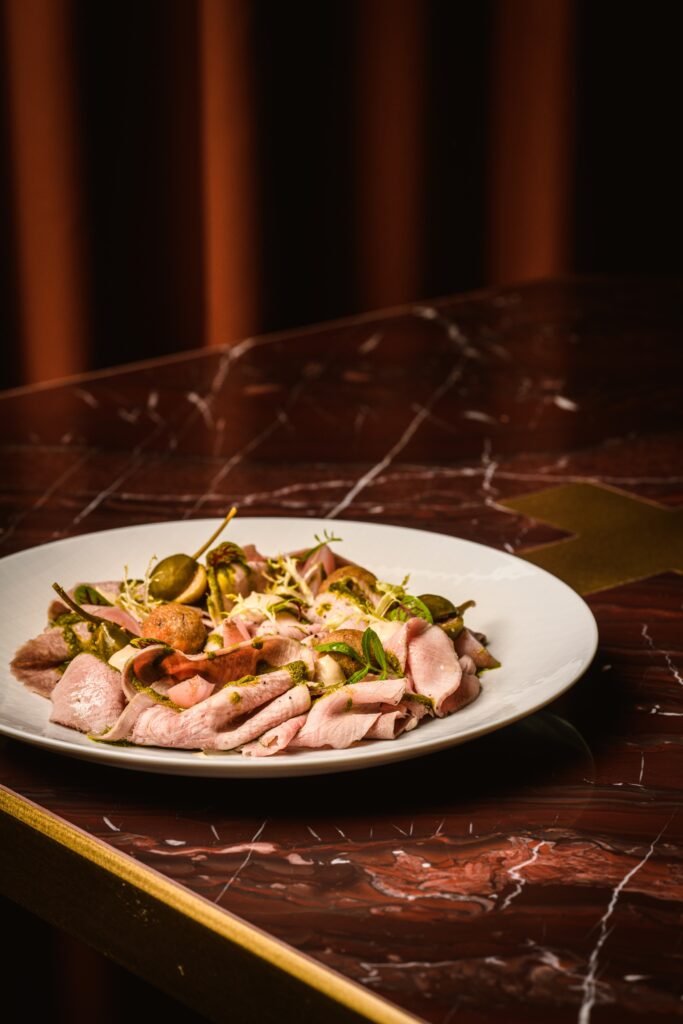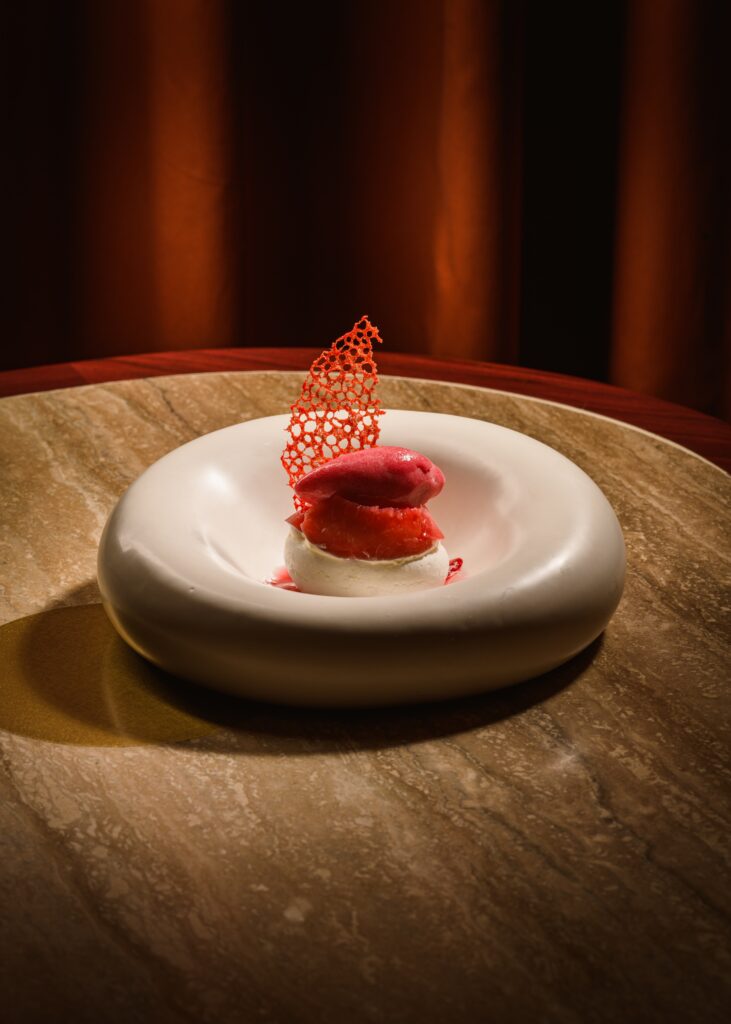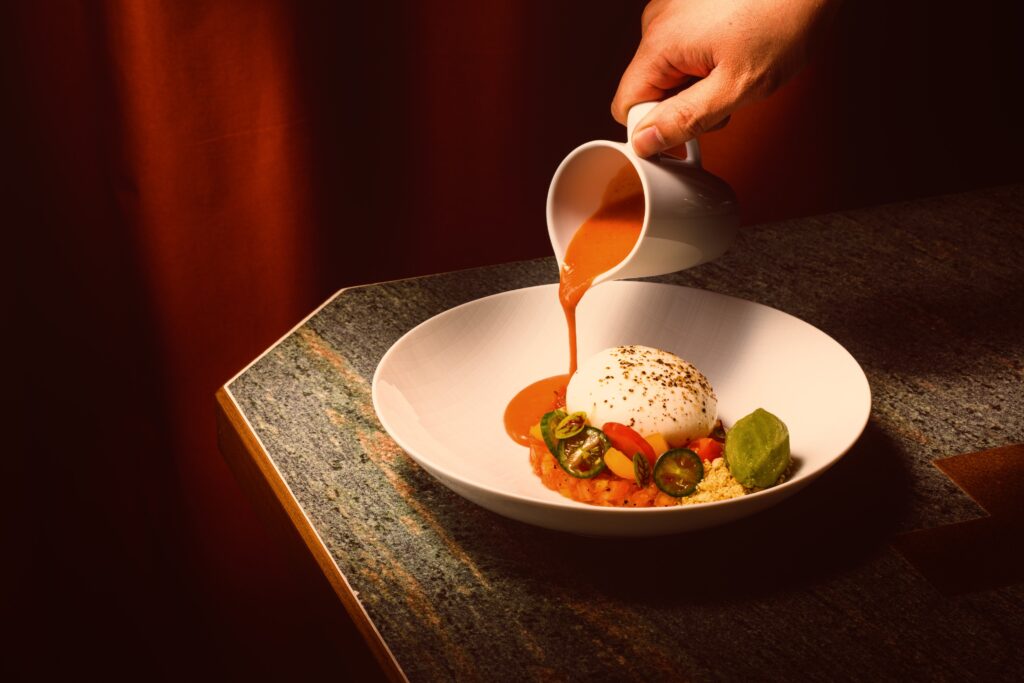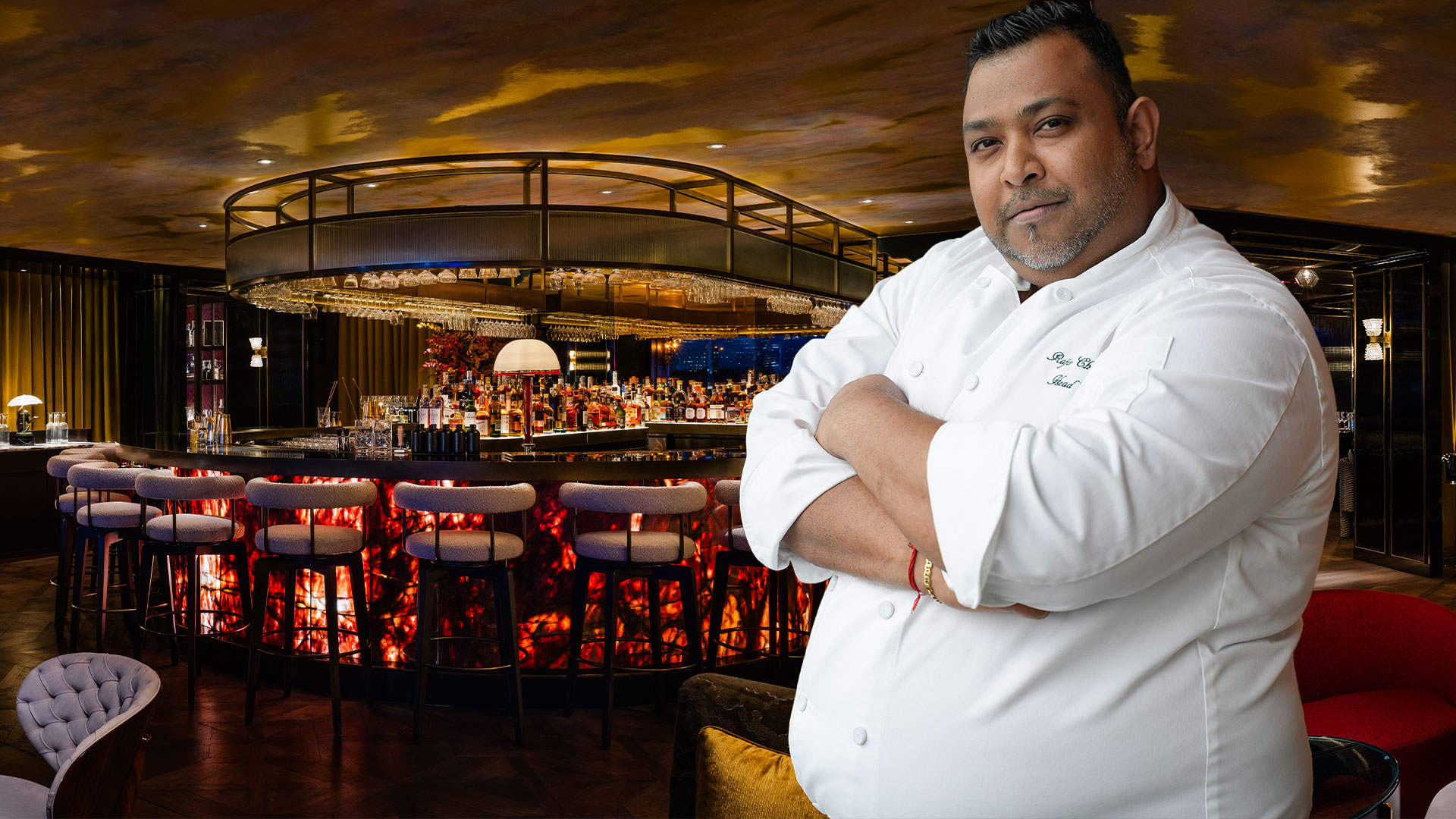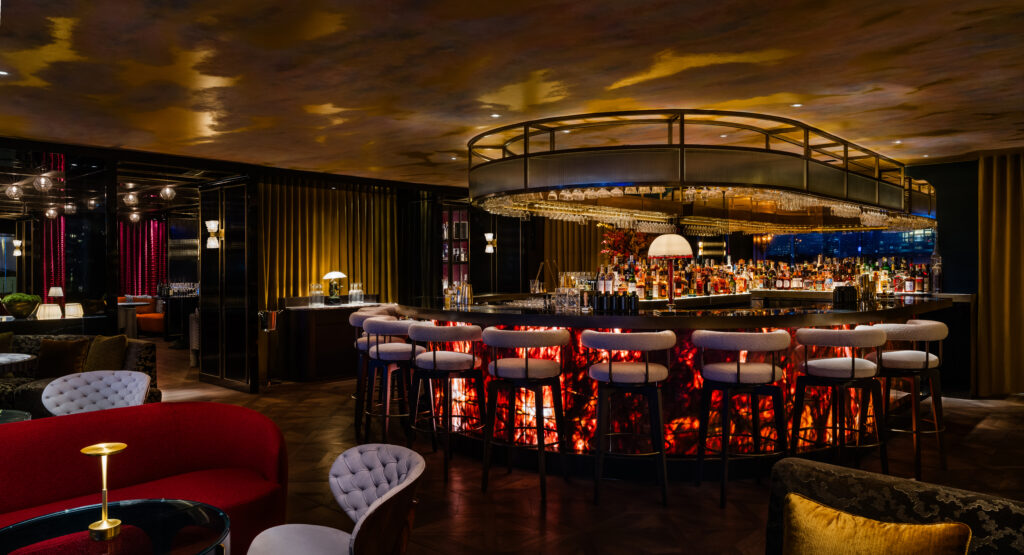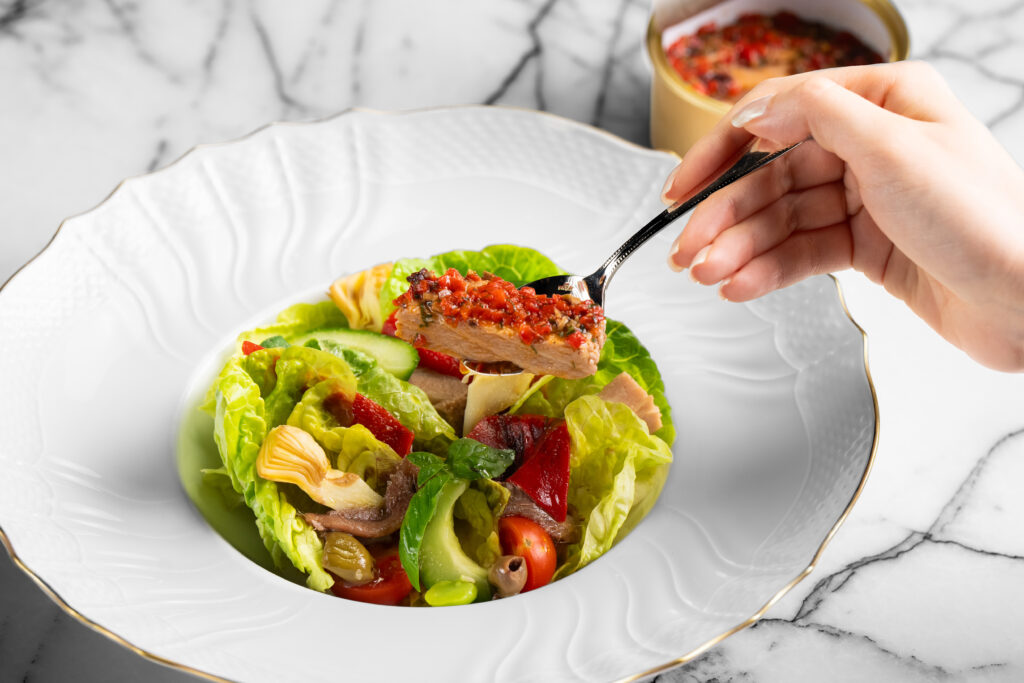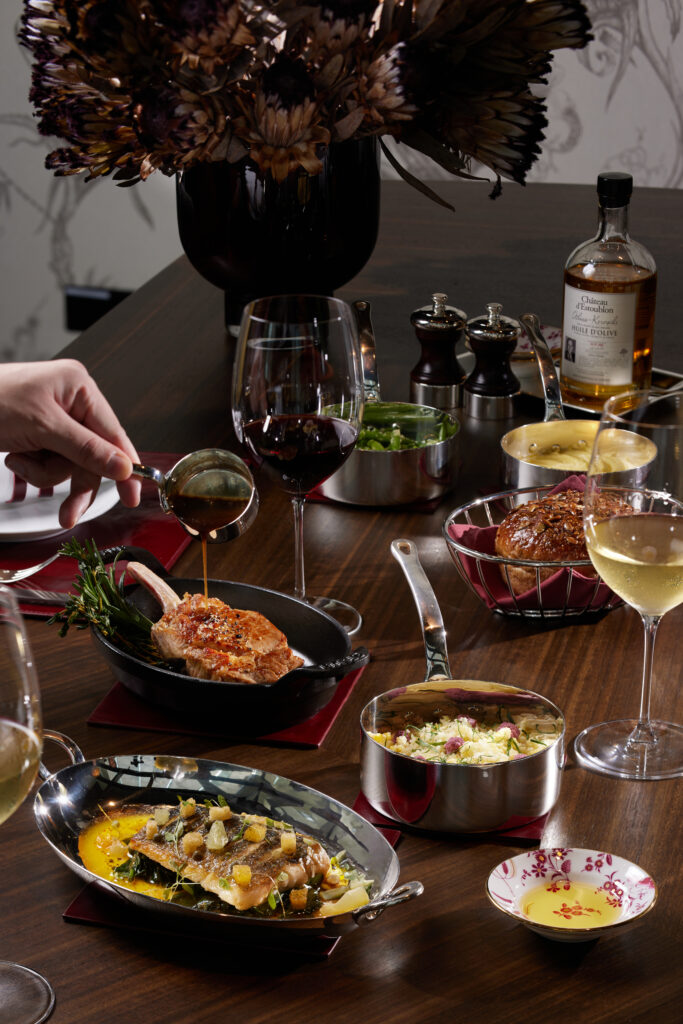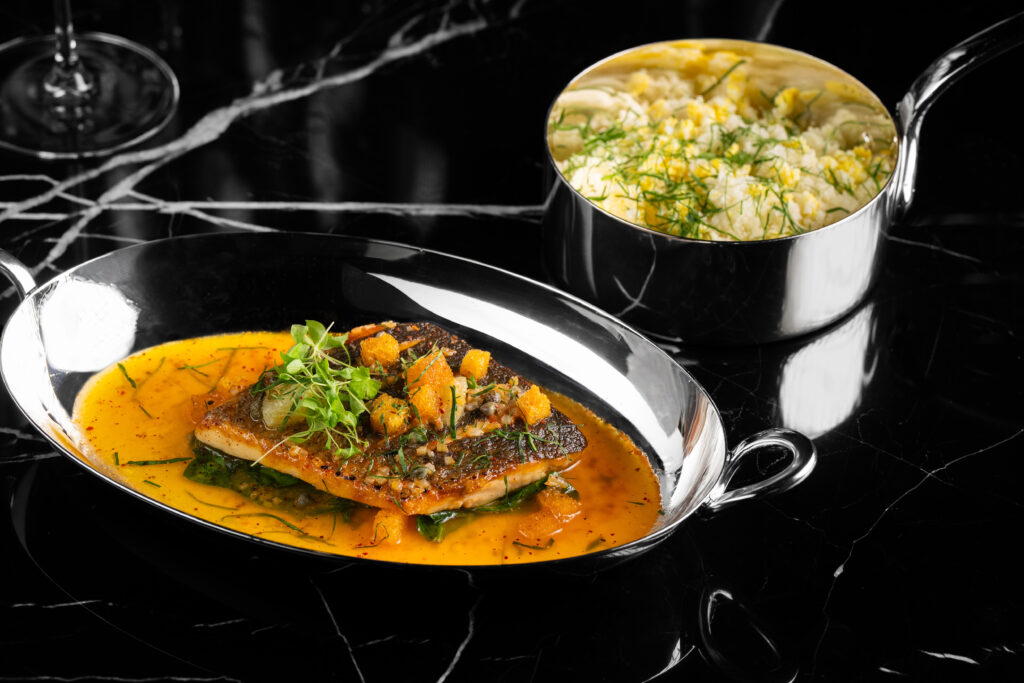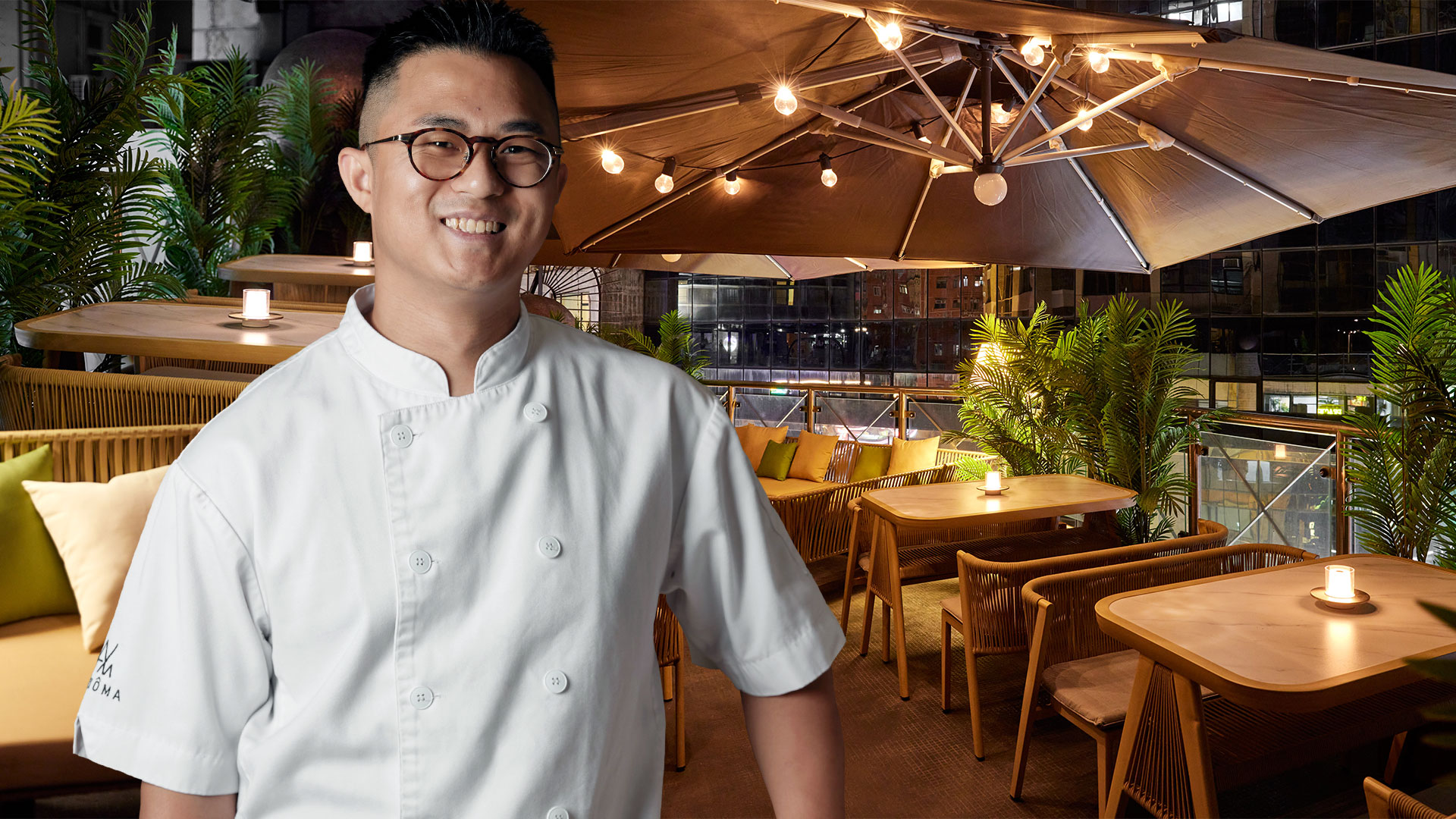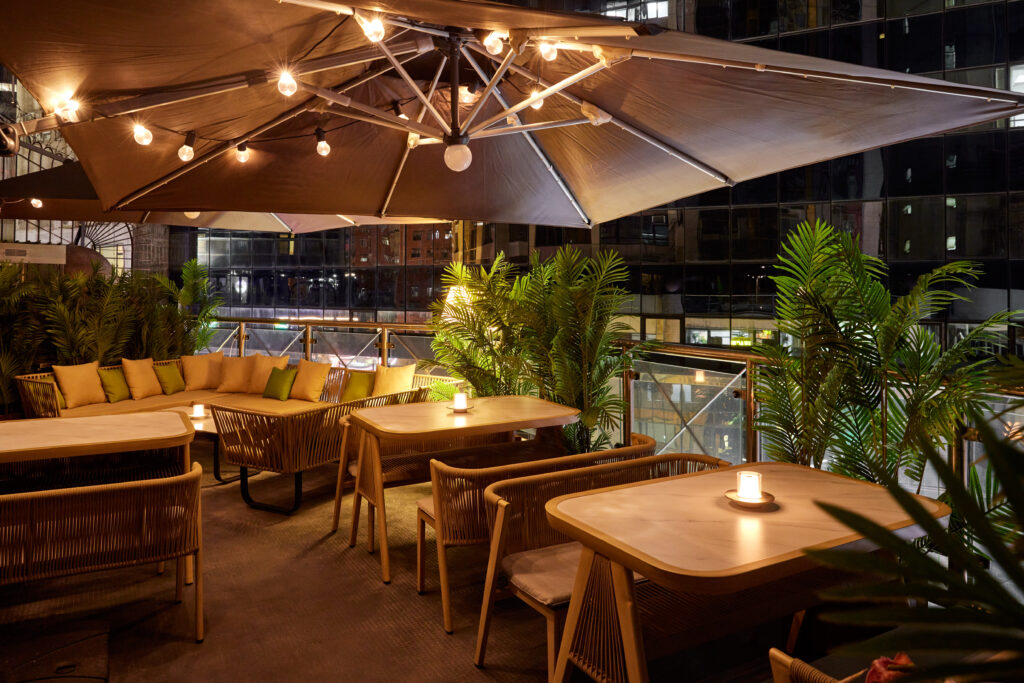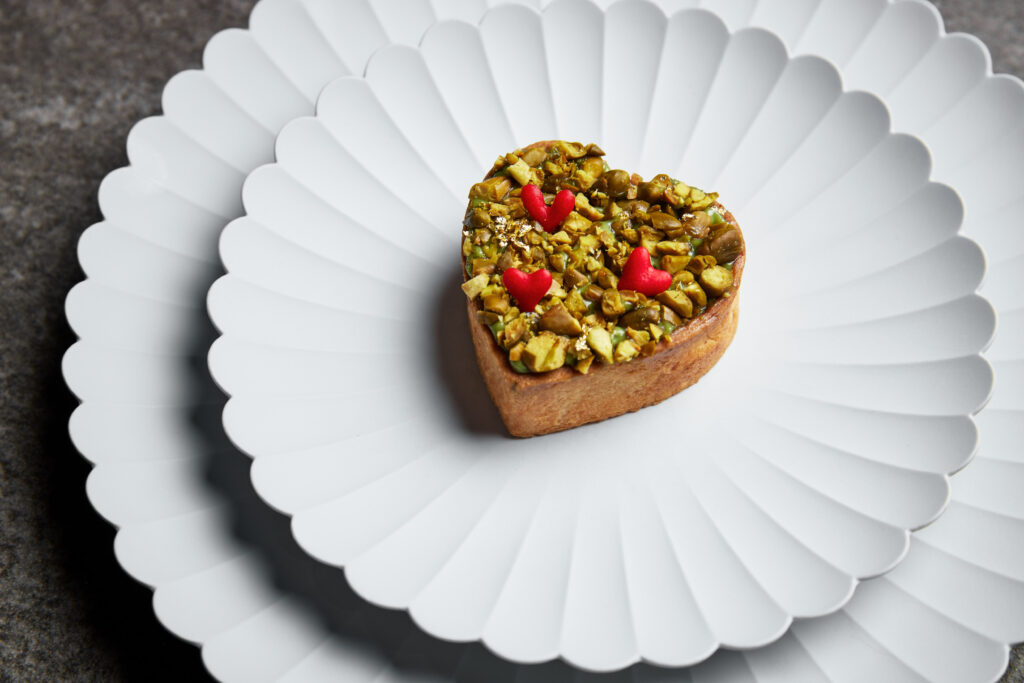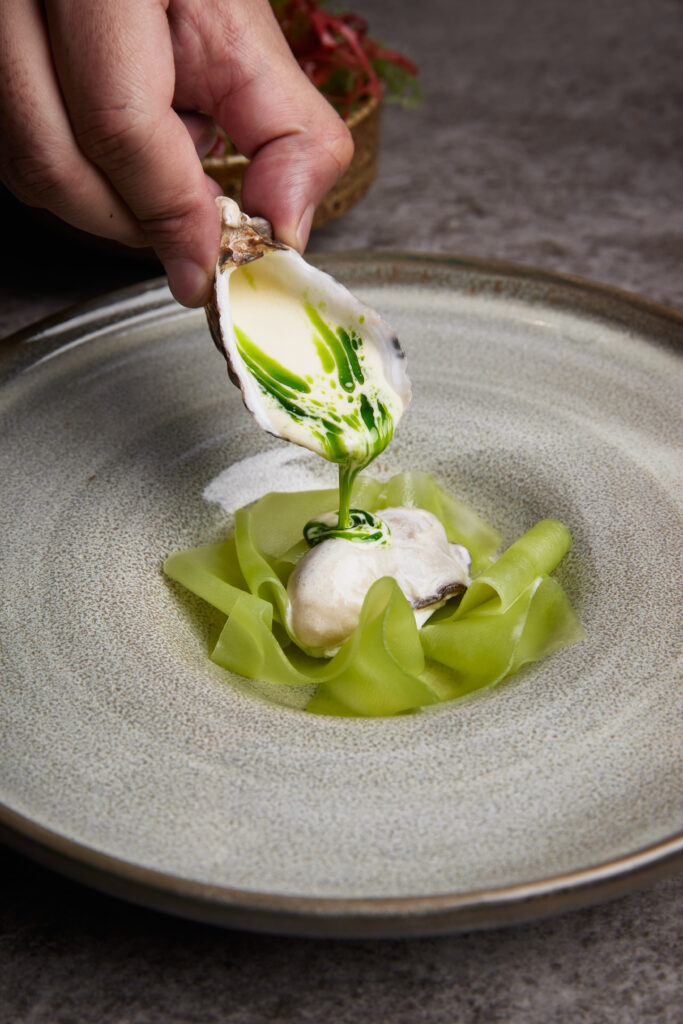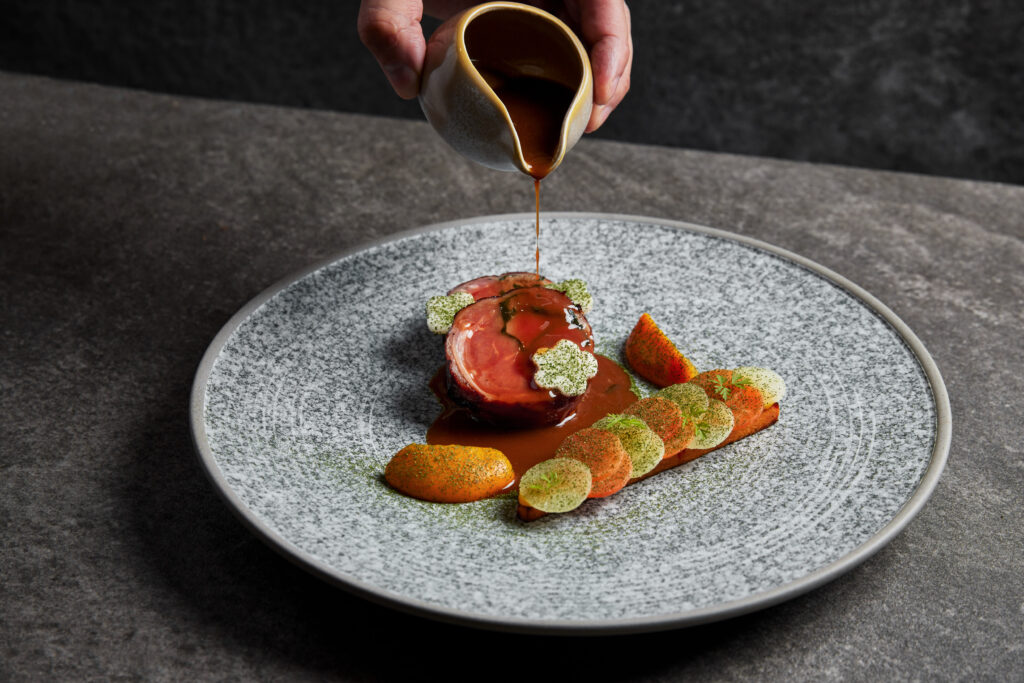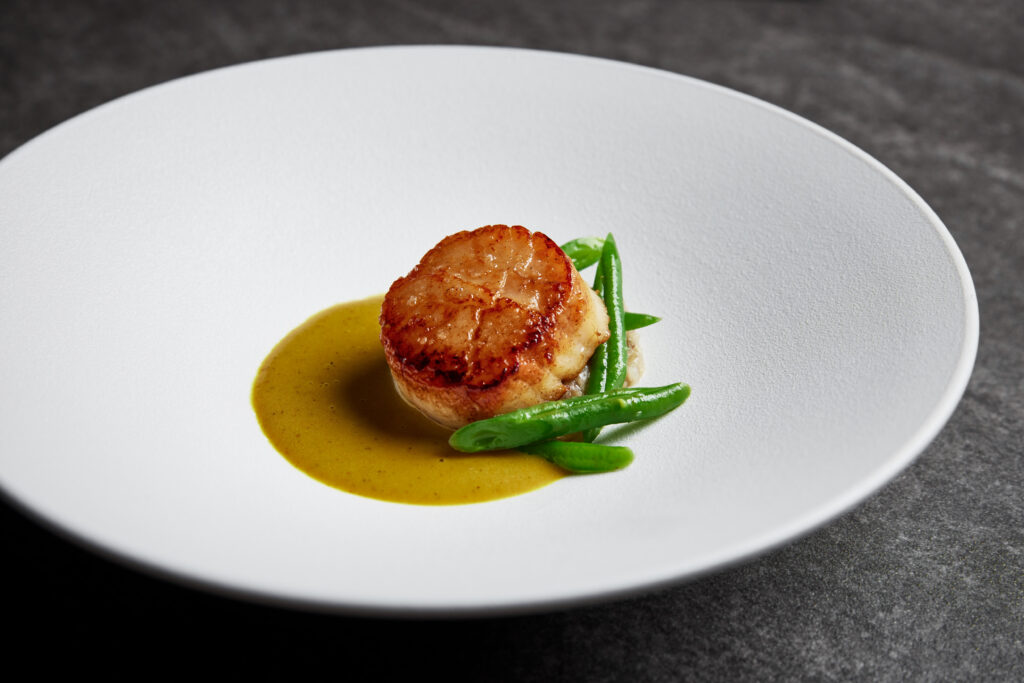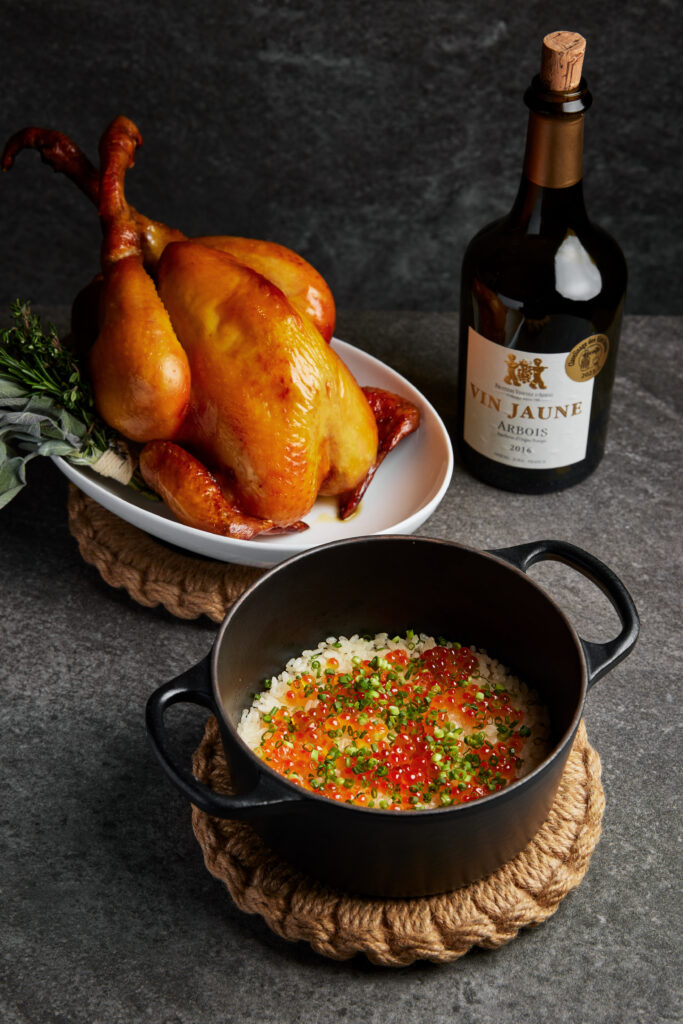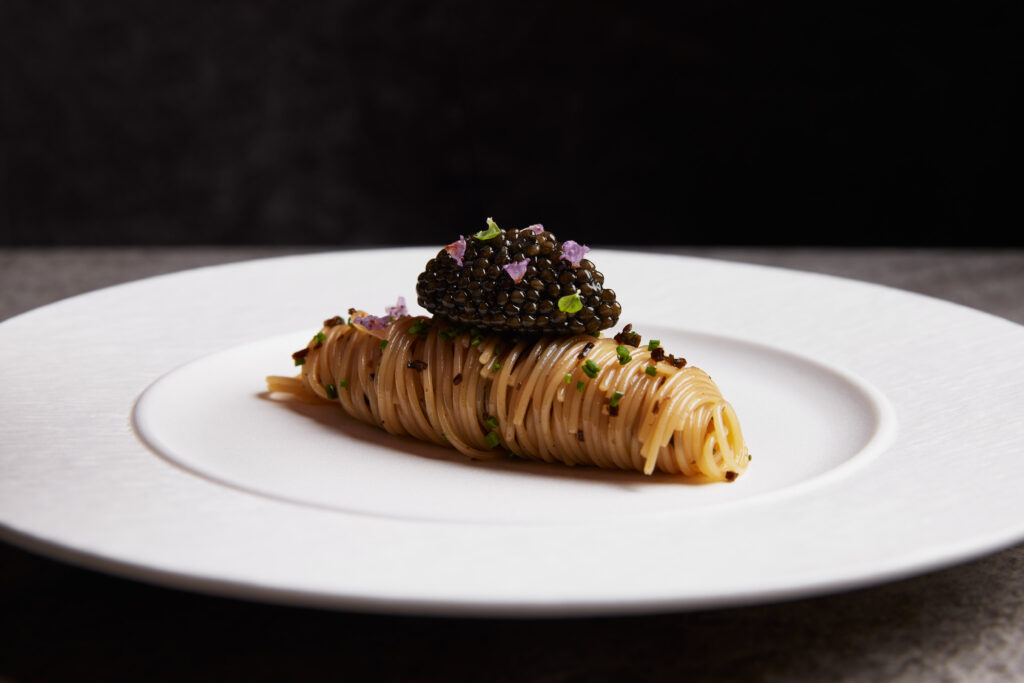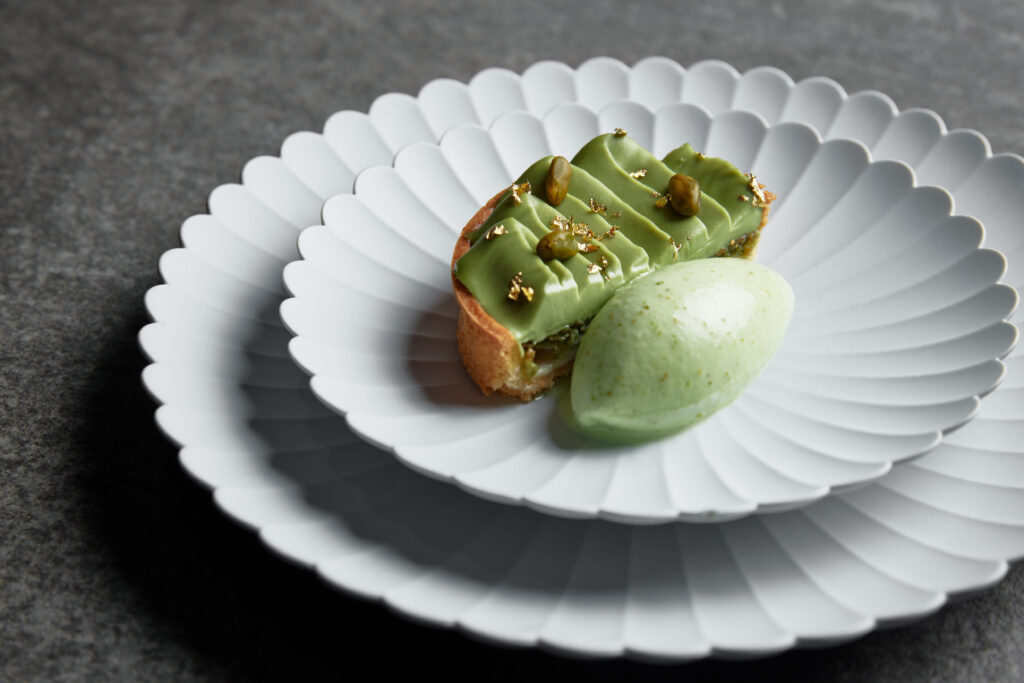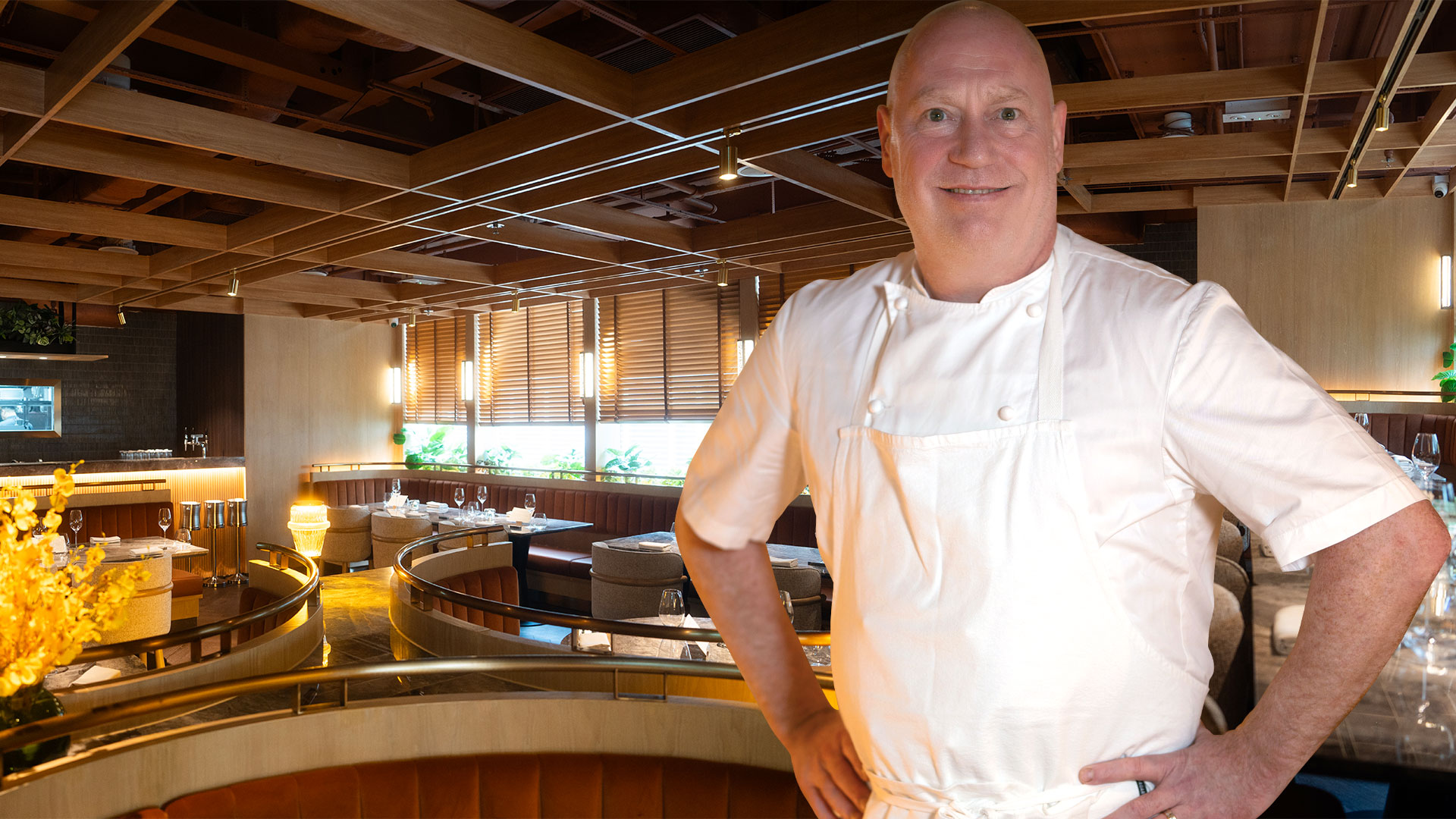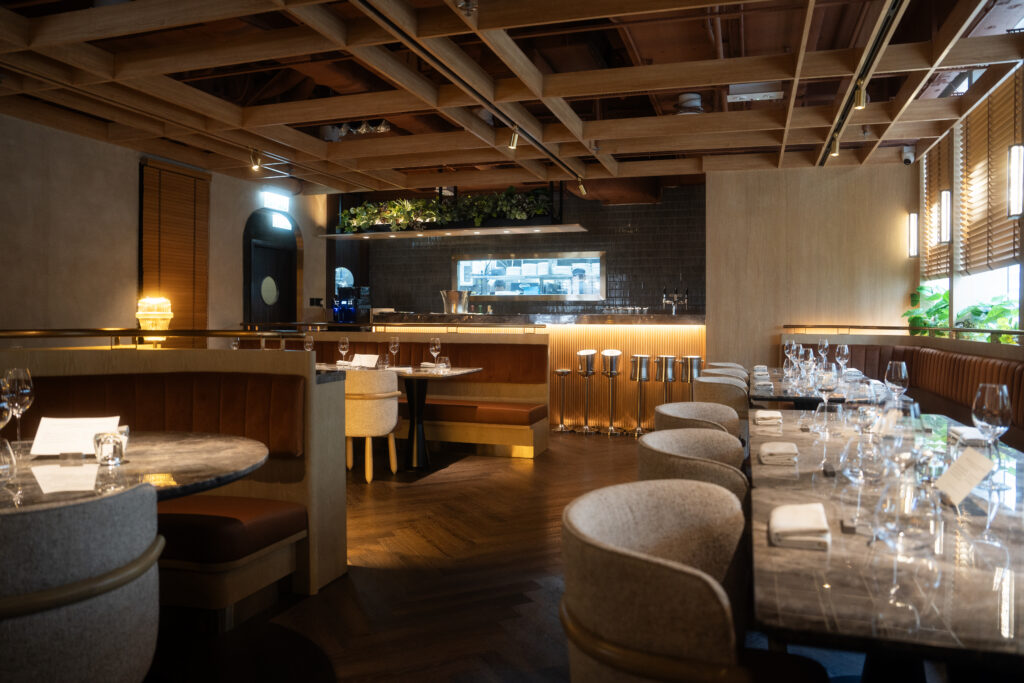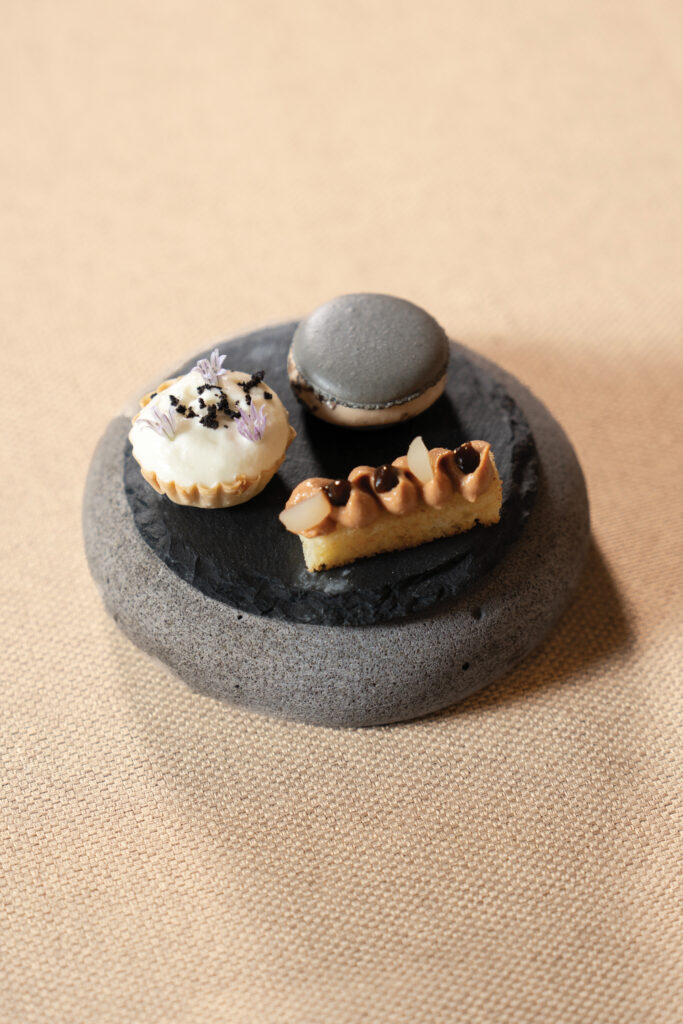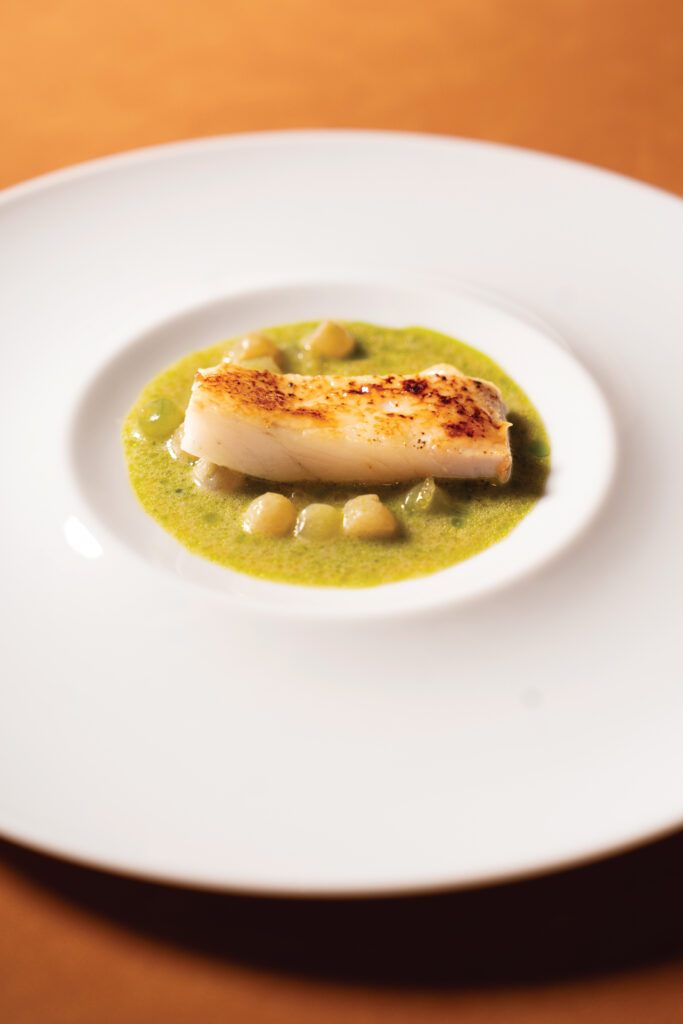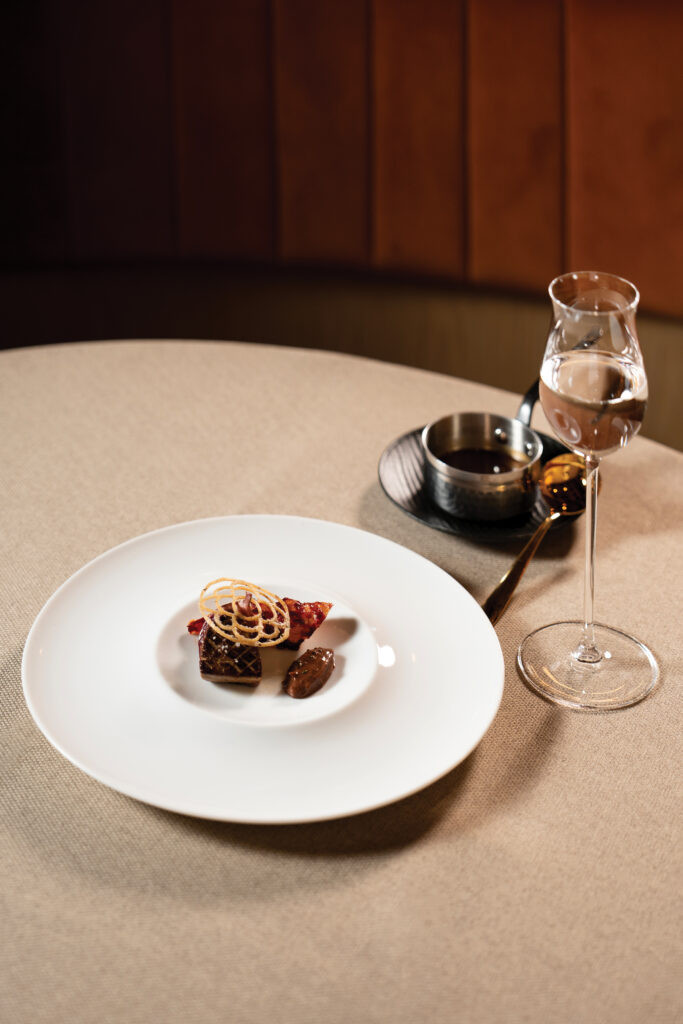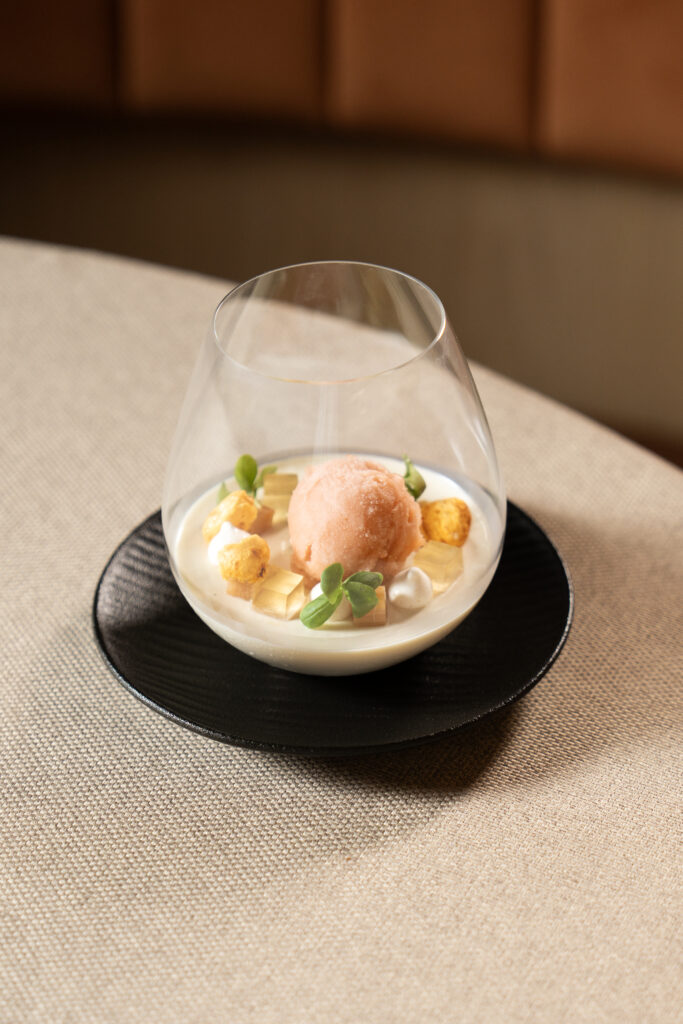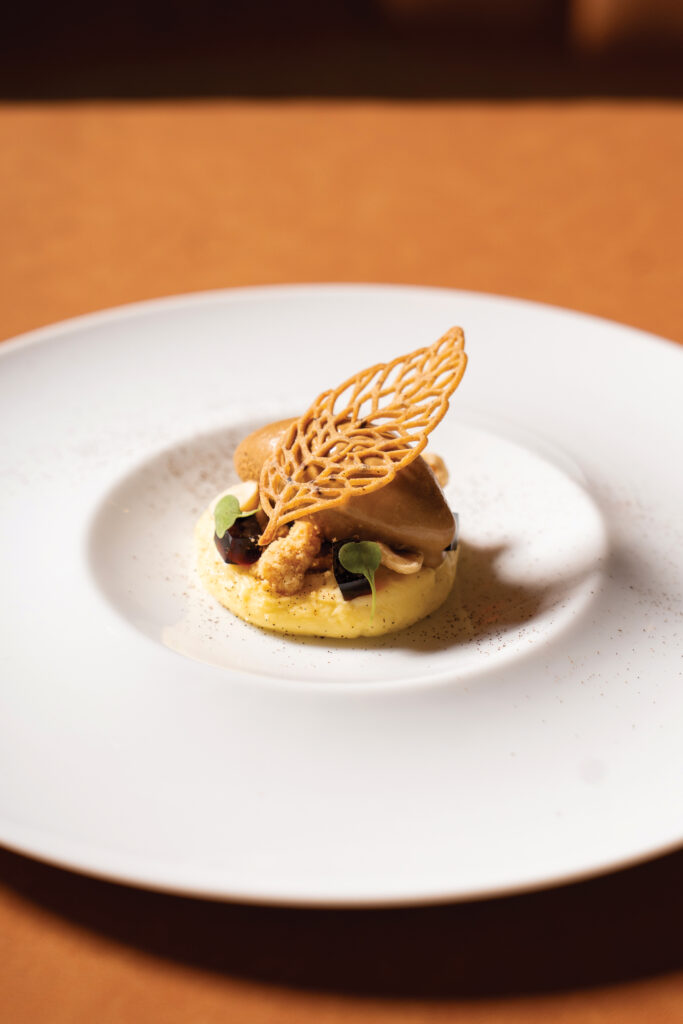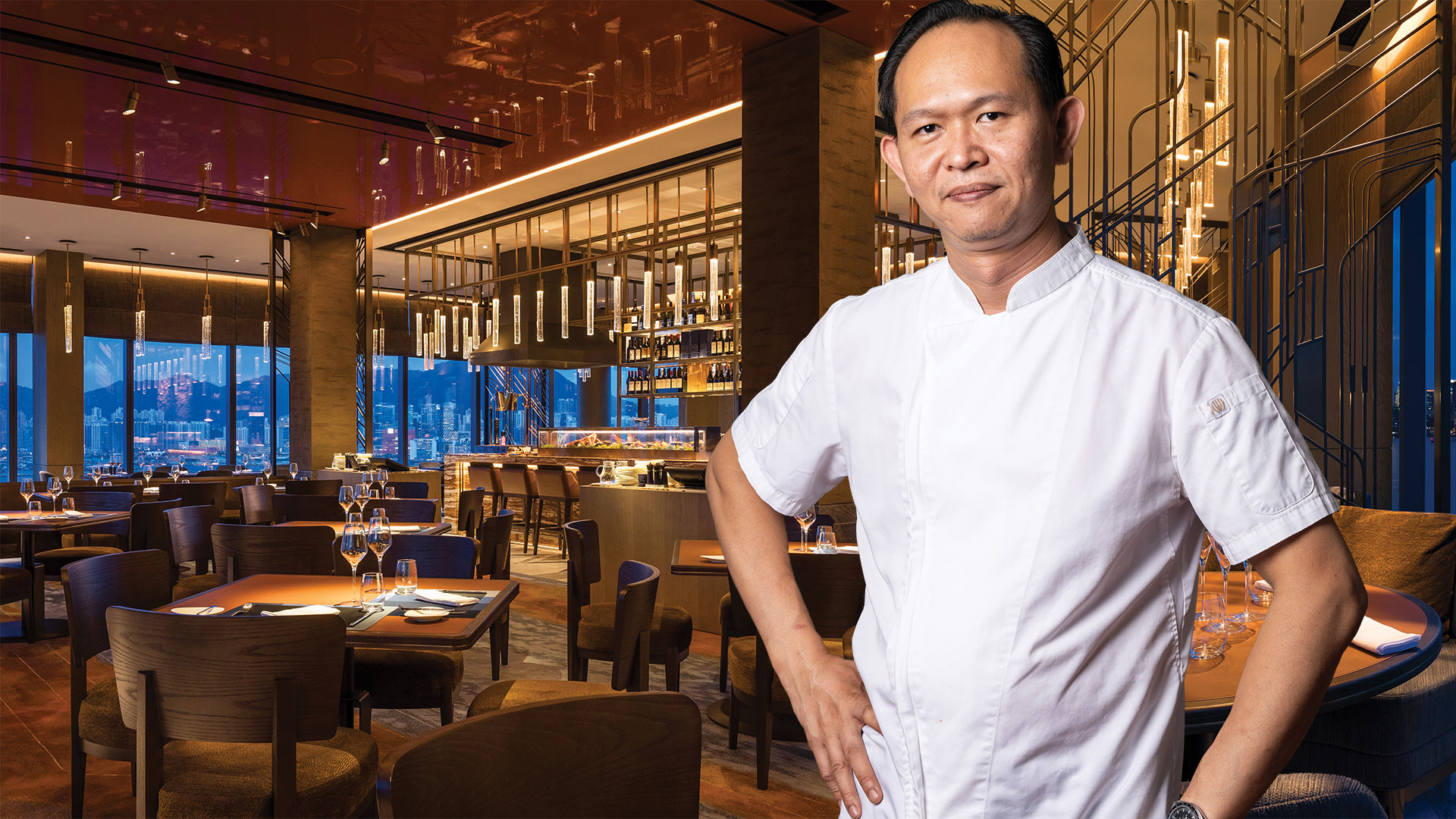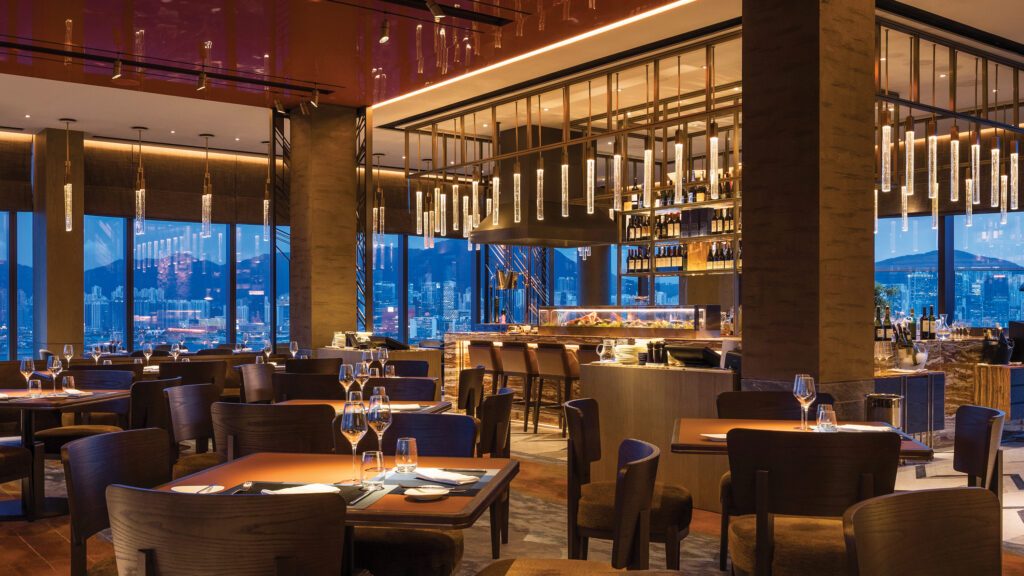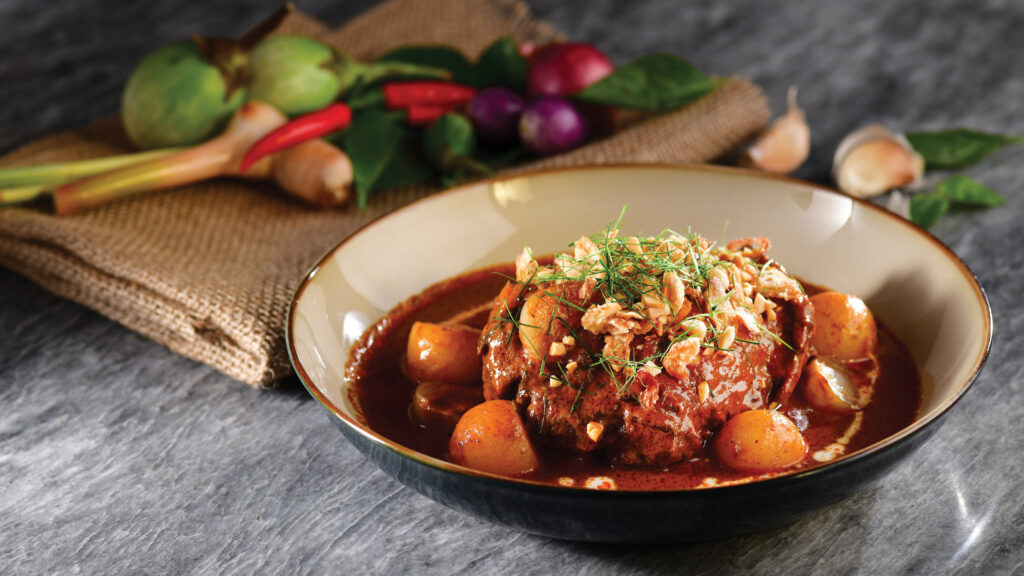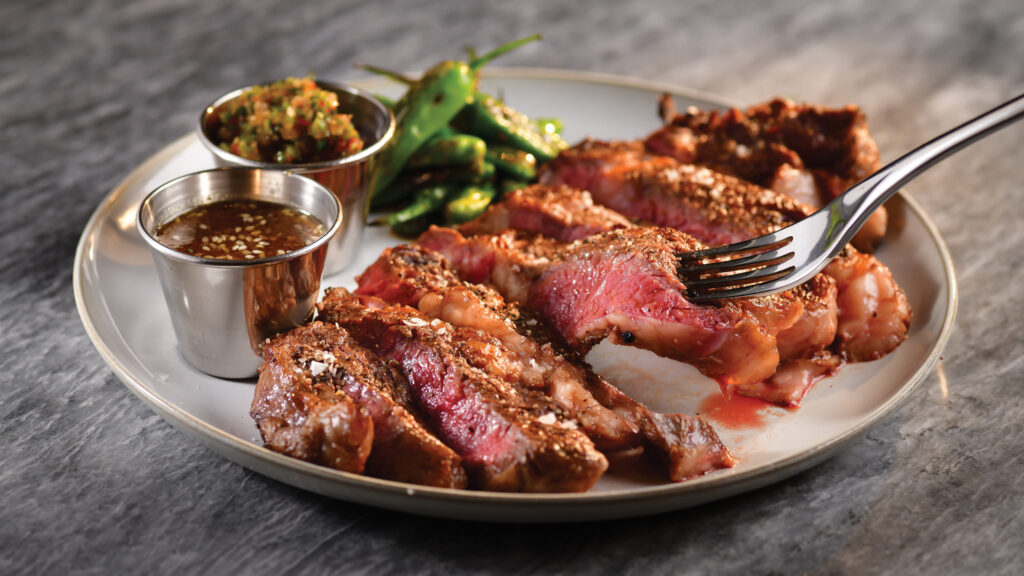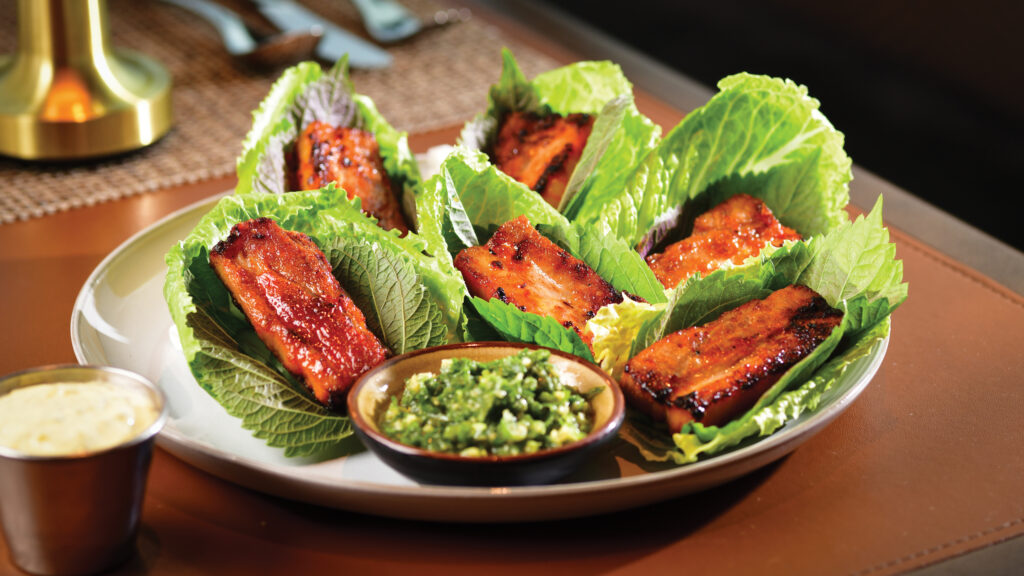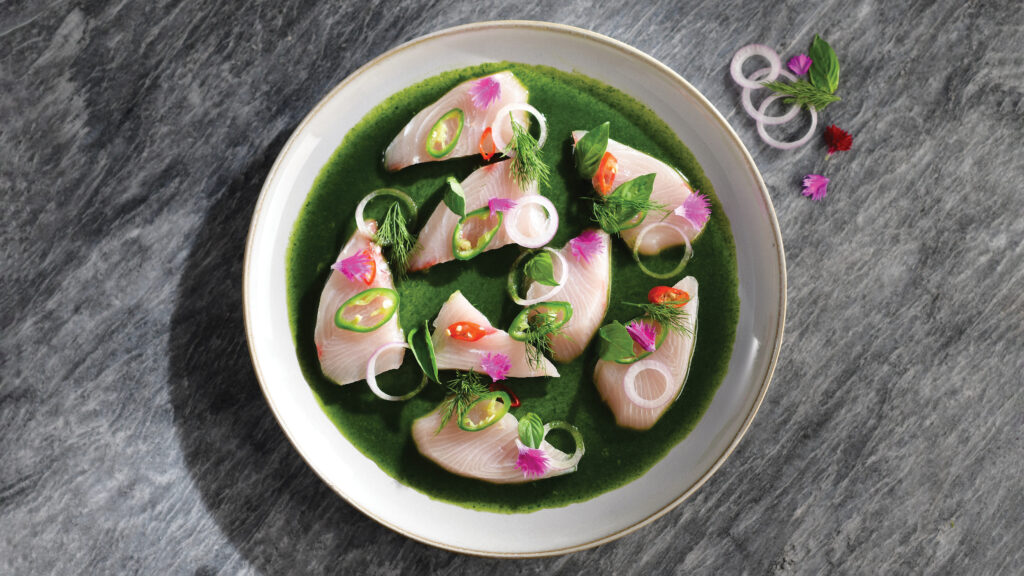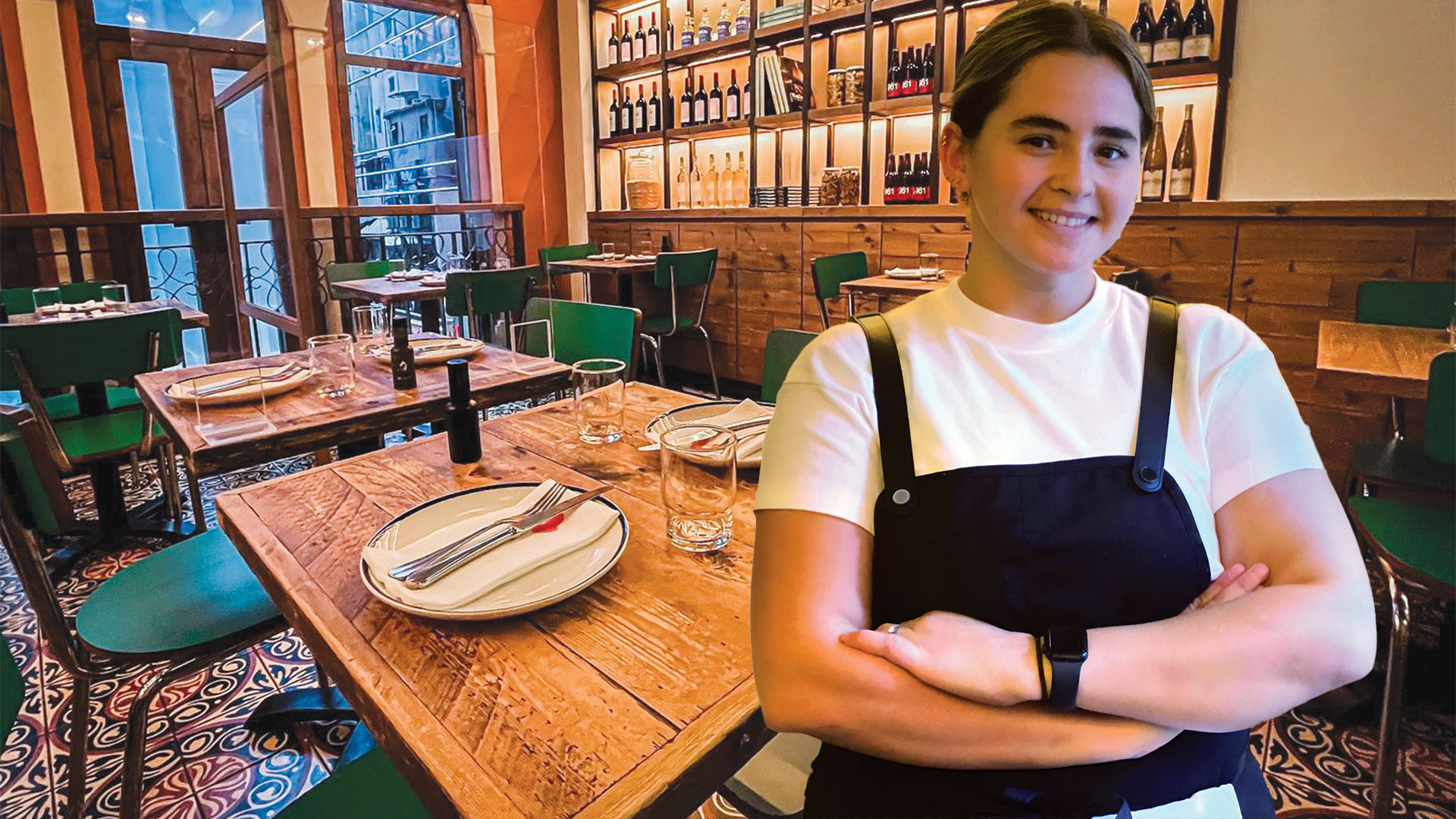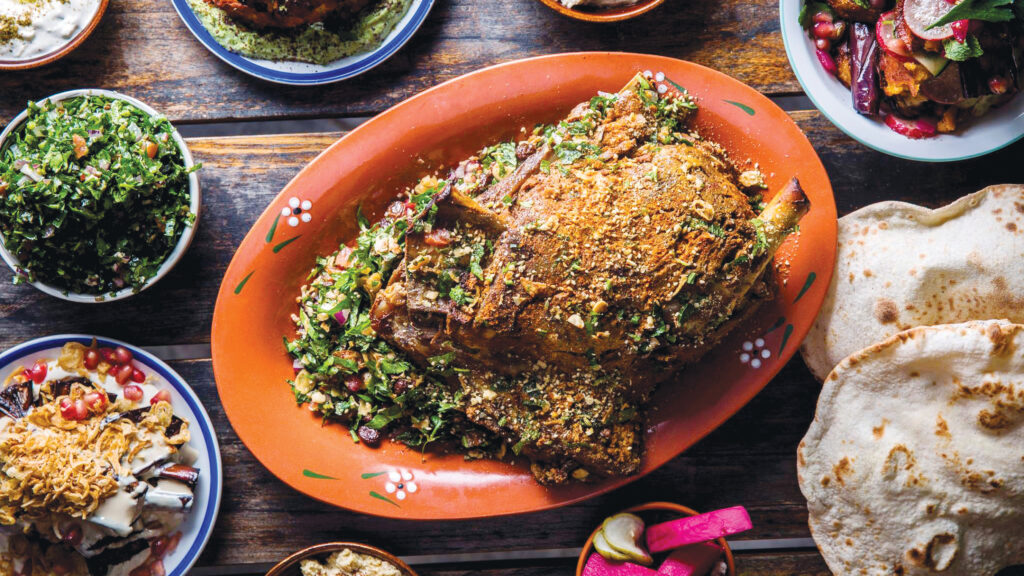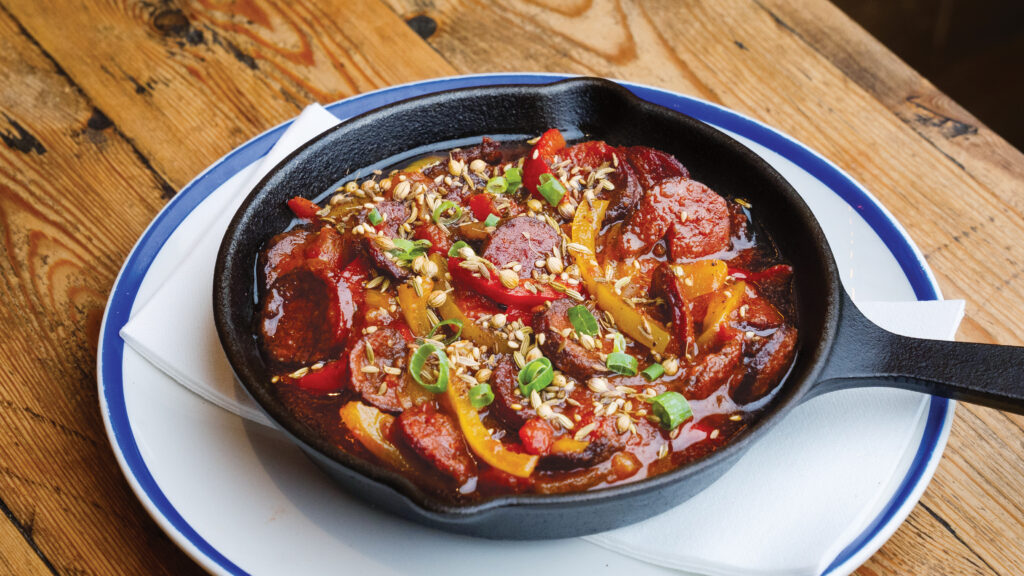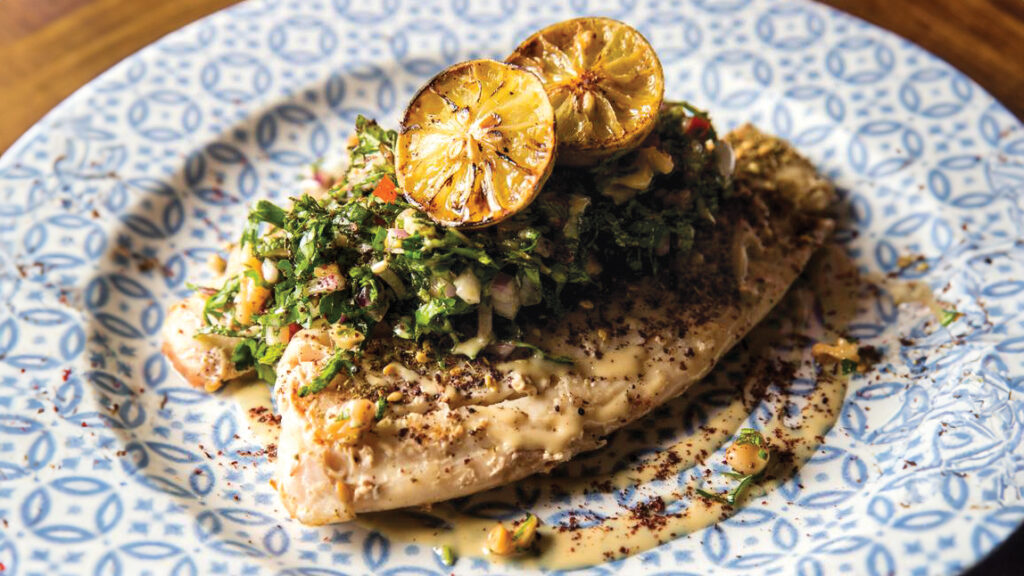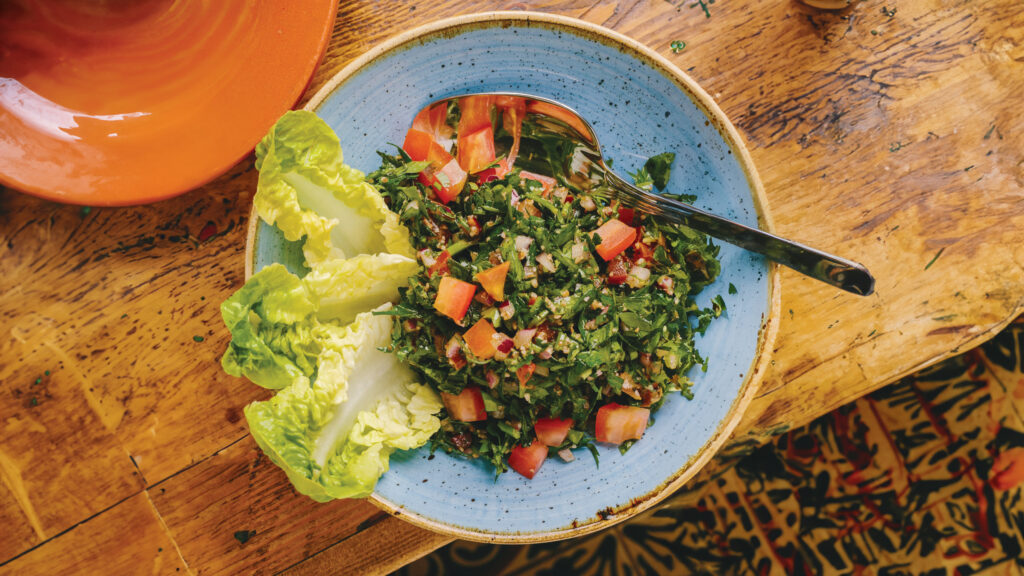It’s 12:30 pm on a breezy autumn afternoon in Sheung Wan, but in the Racines kitchen, dinner is already in full swing. Backs are curved over dough that will soon become sourdough loaves, the evening’s sorbet is well in hand, and beloved signature staples are being prepped. The restaurant itself is homey and unhurried, with an easy-going vibe that hides the greater ambitions of the chefs. Not to mention, the surprising choice of ’90s to early 2000s hip-hop playing in the background.
Designed around an illustration of a seedling and its roots (‘racines’ in French), the cascading tasting menu showcases the finest seasonal ingredients and celebrates the rich culinary traditions of the South of France. Nestled in the heart of Hong Kong, this petite restaurant garnered a well-deserved Michelin star this year, solidifying its status as a must-visit destination for food enthusiasts.
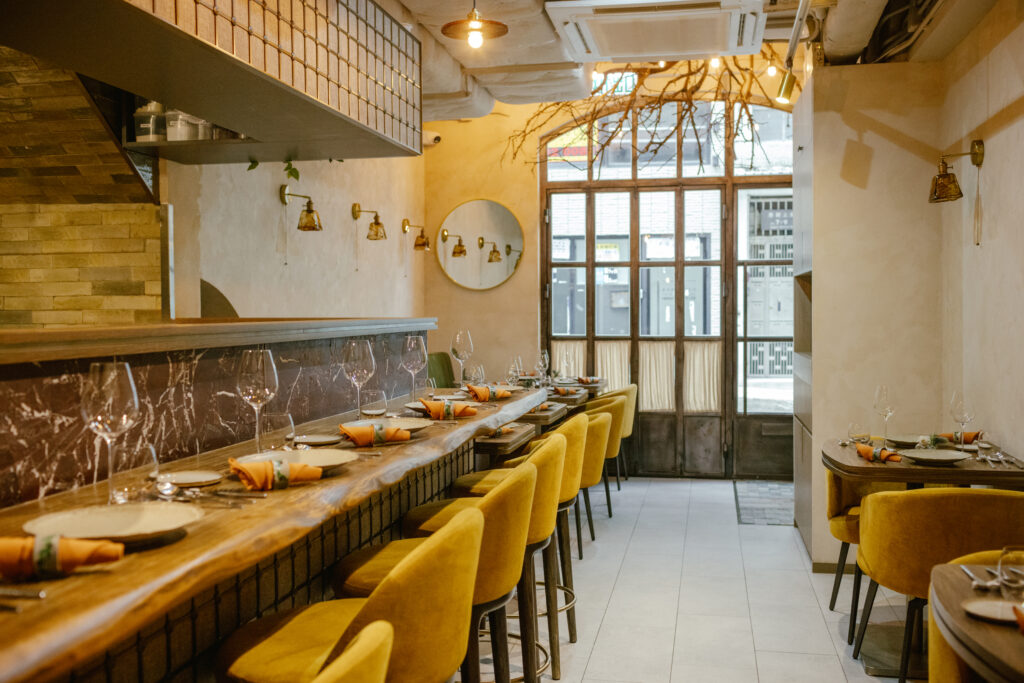
“I want our guests to feel a sense of comfort in our dining room, to relax and enjoy each dish and the elements we’ve created to reflect the autumn season,” says executive chef and co-owner Romain Dupeyre, who was raised in Nice. His co-chef, co-owner and best friend, Adrien Castillo, was a fellow apprentice at La Chèvre d’Or on the French Riviera nearly 20 years ago.
“We want to offer our guests a sense of fulfilment from the quality and creativity on their plates and enable them to feel connected to the experience, especially at our chefs’ counter where they can have a front-row seat to the team’s creative process and interact with us.”
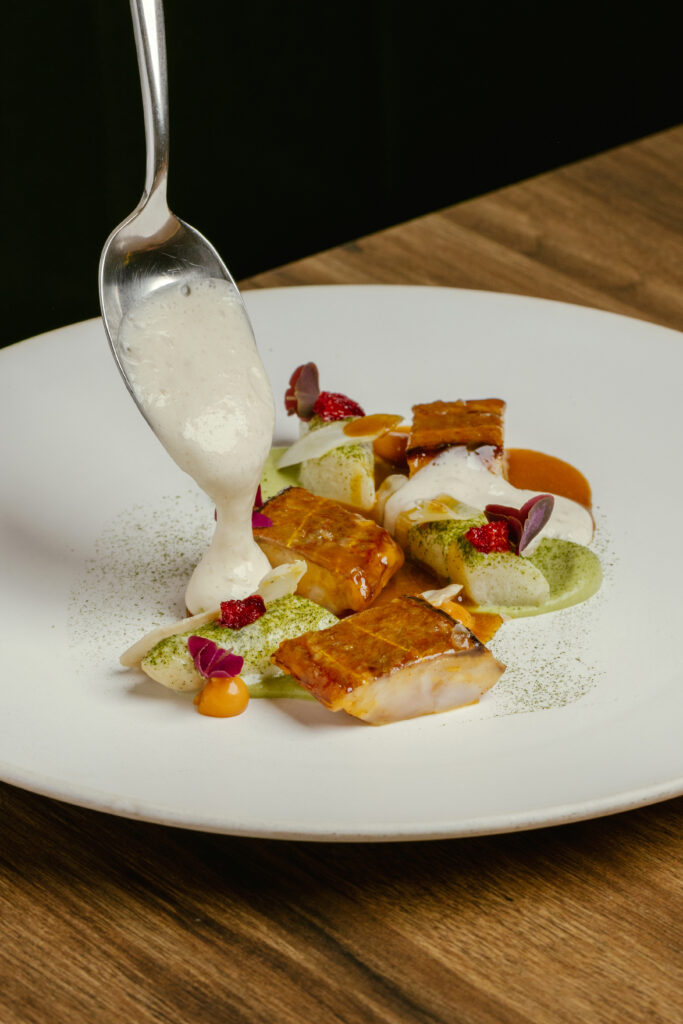
The six-course dinner tasting menu begins and ends with a humble vegetable reimagined in unexpected ways. The opening act, Camus Artichoke, is an inventive take on traditional duck-and-walnut salade Landaise. It expertly balances earthy notes with the vibrant flavours of southern France, creating a delightful medley that awakens the senses.
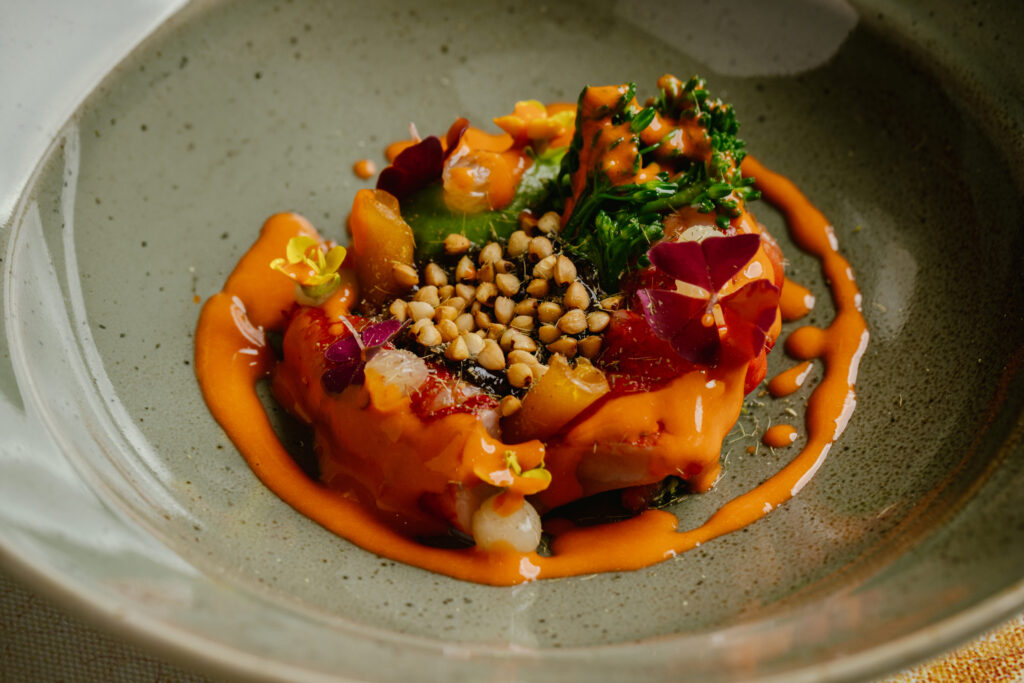
“I love to put a unique twist and artistry to each dish to spark curiosity and take our guests on a discovery of new tastes and textures,” says Chef Dupeyre. “I hope to ignite a sense of excitement and wonder about the culinary possibilities of the ingredients, and so far, it’s been very well received. Guests are often surprised when this dish is presented, because it’s not how they would have had it before, but they’re open to it, and delighted by it.”
The third course is a particular standout: Mediterranean red mullet, which pays homage to the classic bouillabaisse. The dual preparation of the fish is a bold culinary statement. For the first, a cold dish, the mullet is air-dried for three days, intensifying its flavour while imparting a delicate texture. Cured in a blend of salt, sugar, lemon and orange juice, it’s both refreshing and rich. The second preparation sees the fish pan-fried to perfection, the subtle crispiness complementing the tender flesh.
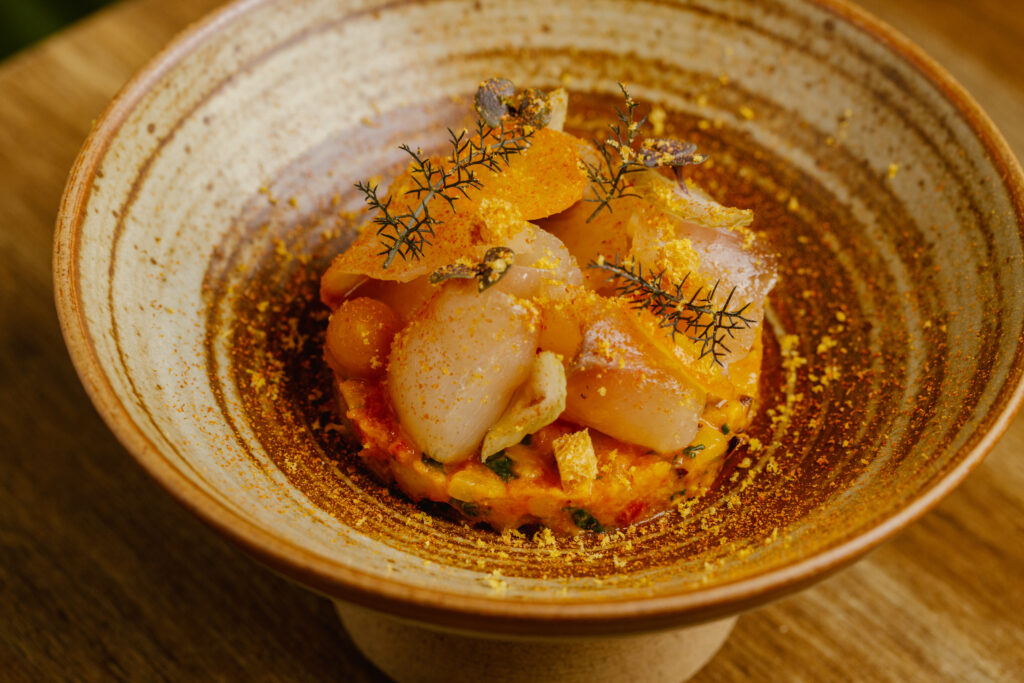
Brittany pigeon and Brandt beef from California, both elevated to new heights as main-course choices, are faultless. The pigeon, paired with figs at their seasonal peak, presents a perfect harmony of sweetness and rich, savoury flavours. Meanwhile, the ribeye flank, kissed by the smoky essence of a binchotan grill, embodies the heartiness of the season. The beef is enhanced by a selection of seasonal ingredients that deepen its flavour profile.
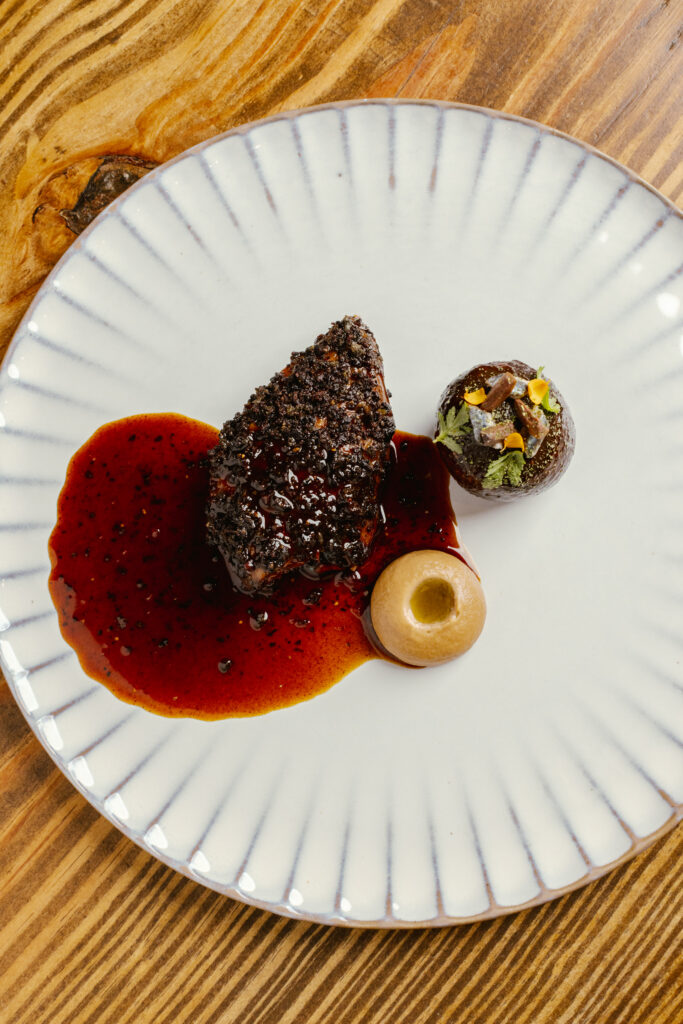
Following the cheese course served with house-made sorbet, Jerusalem artichoke takes centre stage, defying traditional dessert expectations. The chefs skilfully transform this root vegetable into a sweet finale that captures the essence of autumn. It’s an unexpected twist that not only surprises the palate but also leaves a lasting impression, marking a memorable end to the meal.
Complete with a root chandelier and a dining countertop engraved with the Chinese characters for prosperity and power, Racines provides irrefutable assurance that rustic dining is not and should not be at all intimidating. More than good food and more than a gateway to French cuisine, it is a sign of the times that beautifully marries tradition with innovation.
Racines, 22 Upper Station Street, Sheung Wan, Hong Kong.
Photos: Racines Video: Jack Fontanilla



